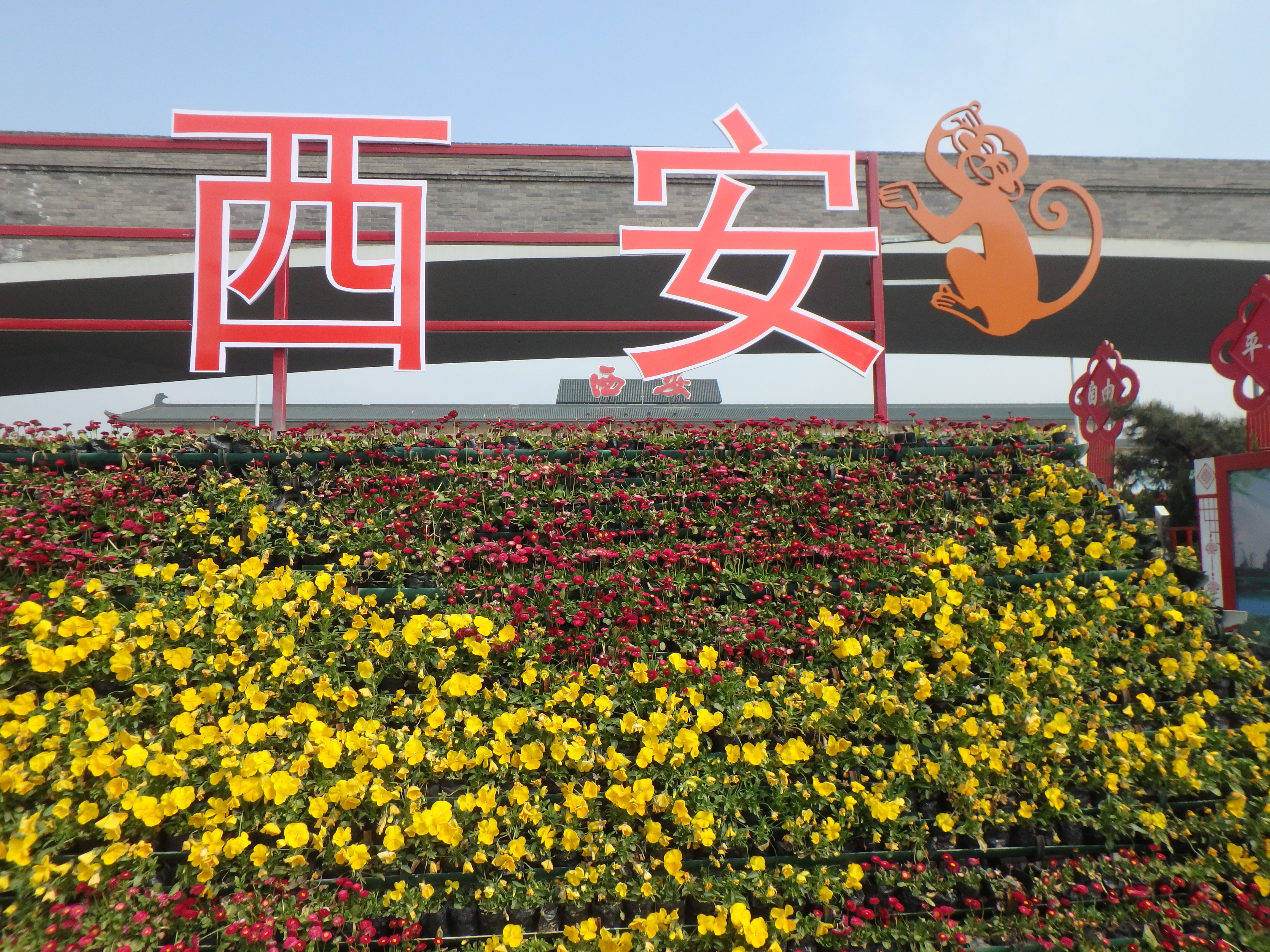
Travel Guide to Xi’an City, China
If you are pondering if Xi’an is worth a visit, here’s why you should continue to read on…
Xi’an city is more popularly known as the starting point of the ancient Silk Road journey. People used to explore and do simple trading of goods & culture along the Silk Road route. A city with rich history and is now made popular with the discovery of Terracotta Warriors.
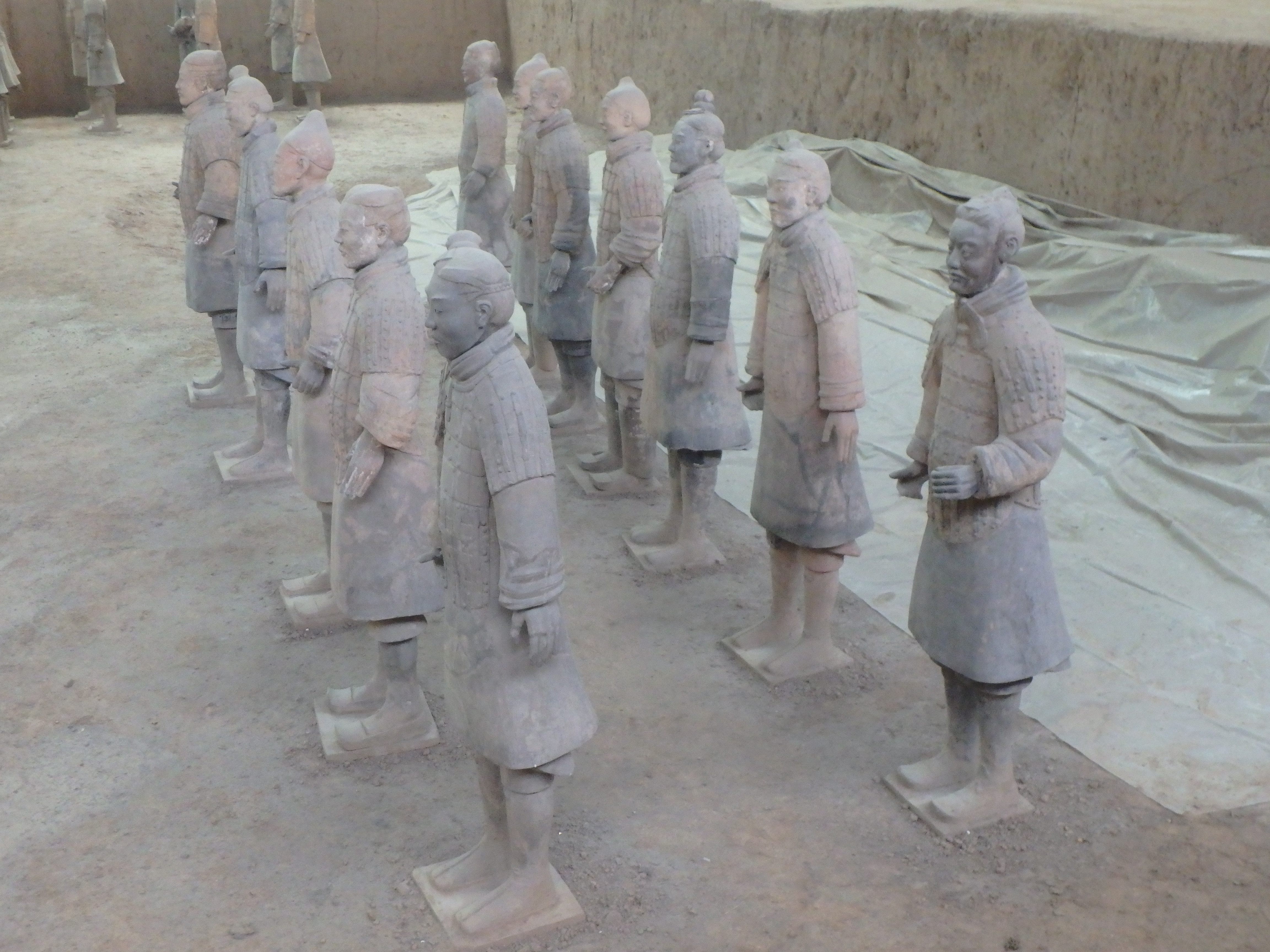
How many days is require to visit Xi’an? If you do not have much time to spare, I would recommend spending 2 Days which will be good enough to cover the essence of this amazing city. Being quite centrally located in China, Xi’an can be the starting point to explore other parts of China with the well developed train network. Moving up to the North direction, Beijing is 13 hours train ride away. Other popular cities such as Nanjing and Chengdu is only a train ride away too, making it one of the favourite starting point for tourists. The main railway train station in Xi’an is incredibly crowded throughout the day and is known to be the ideal place to take buses to tourists spots found in Xi’an.
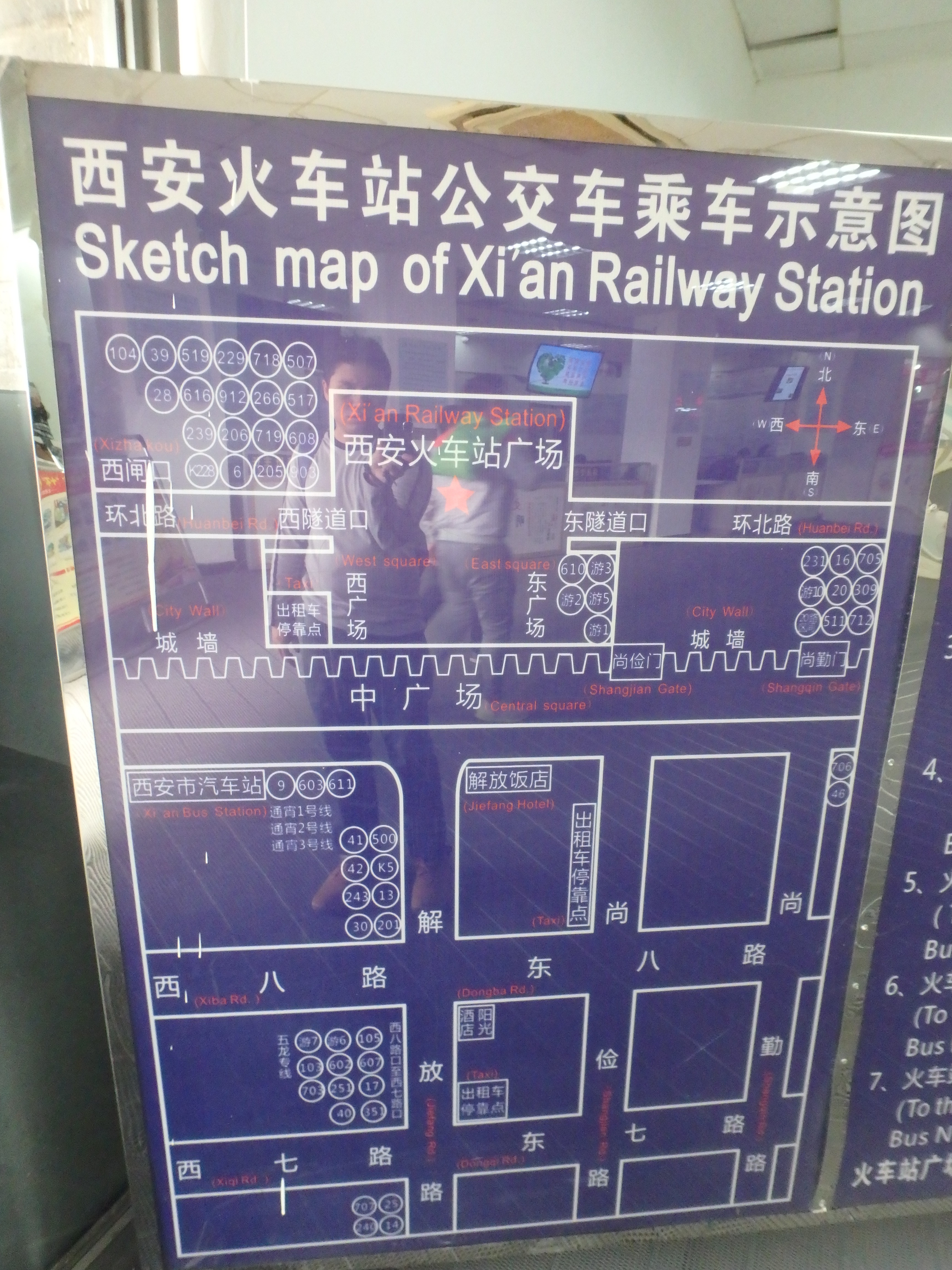
Accommodation
Before sharing the itinerary, here’s a recommended accommodation that I bunked in, which is relatively cheap costing around SGD$15 per night: Wan Shun Yuan Hostel. In mandarin, it is known as an inn by the way. It is located in the quiet corner of the Muslim Food street bazaar where both day and night is equally crowded. You can take your time to wander around the food street till late at night knowing your hotel is easily reached by foot. There is a police station nearby too, ensuring safety for tourists.
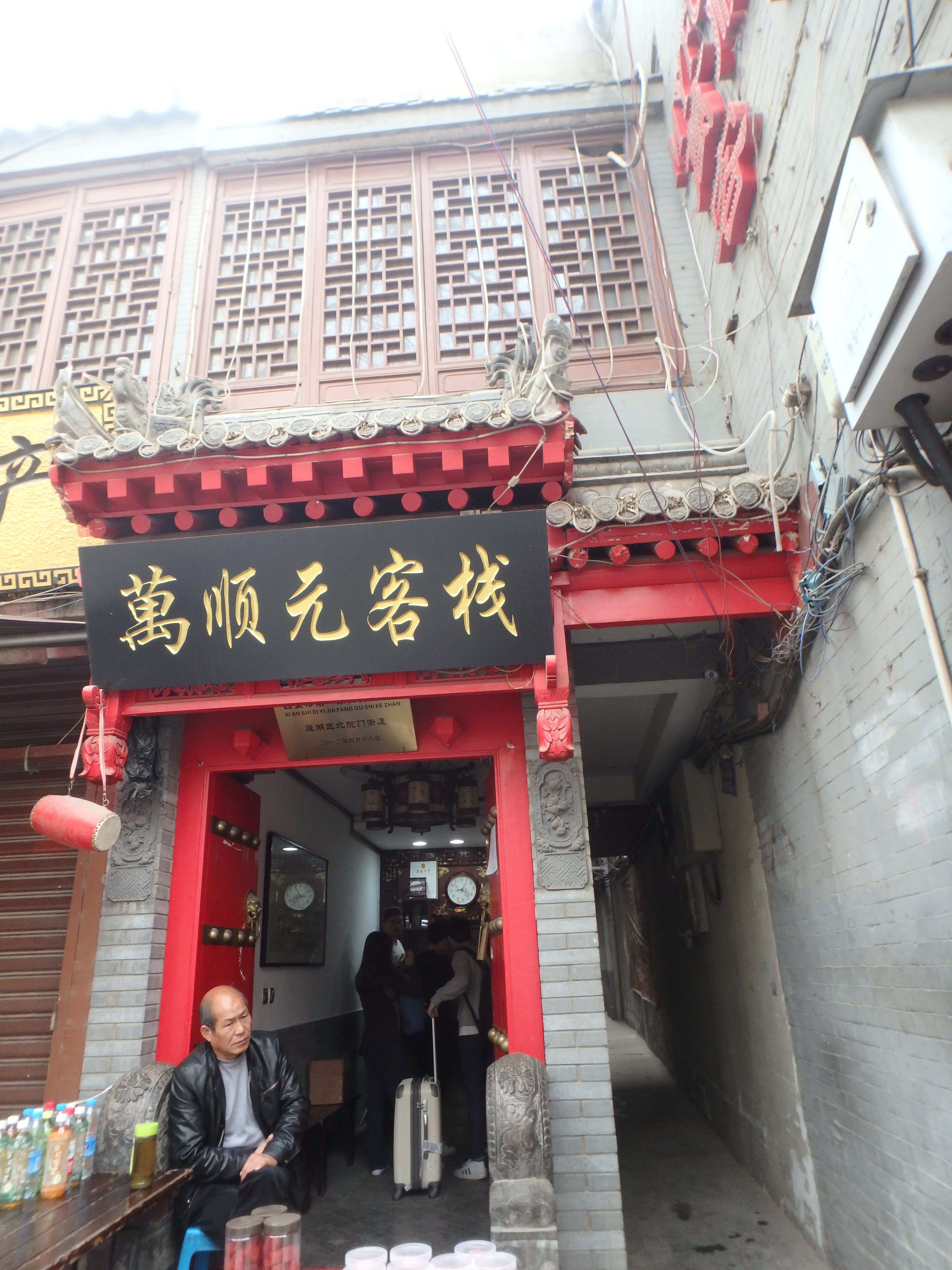
Day 1:
9am: Take public bus to Xi’an railway station, for bus transfer to tourist attractions.
10am: Take bus #306 to visit Huanqing Hots Spring
1130am: Continue ride on bus #306 to visit the famous Terracotta Army area
3pm: Take bus #609 to visit Big Goose Pagoda (Note: There’s Small Wild Goose Pagoda too, do not mix up)
4.30pm: Arrive Big Goose Pagoda , have dinner at the amazing food stalls
7.30pm: Get ready for the nightly fountain show (Free)
8.30pm: Start of fountain show display
8.50pm: End of fountain show display
9pm: Visit night scene of Nanmen
10pm: Enjoy the vibrant night scene around the Bell Tower
1030pm: Visit Muslim Street Night Market
1130pm: Back to Hotel @ Muslim Street
Huanqing Hots Spring & Terracotta Army
The must-see attraction for visitors to Xi’an would be the Terracotta Army Warriors. Obviously, this became my first stop. From my hostel in Muslim Street, I took the public bus costing RMB2 yuan (standard price) to the main Xi’an railway train station.
There’s tourist office located outside the Xi’an railway train station which offer you tips on getting to the famous tourist sites in the city.
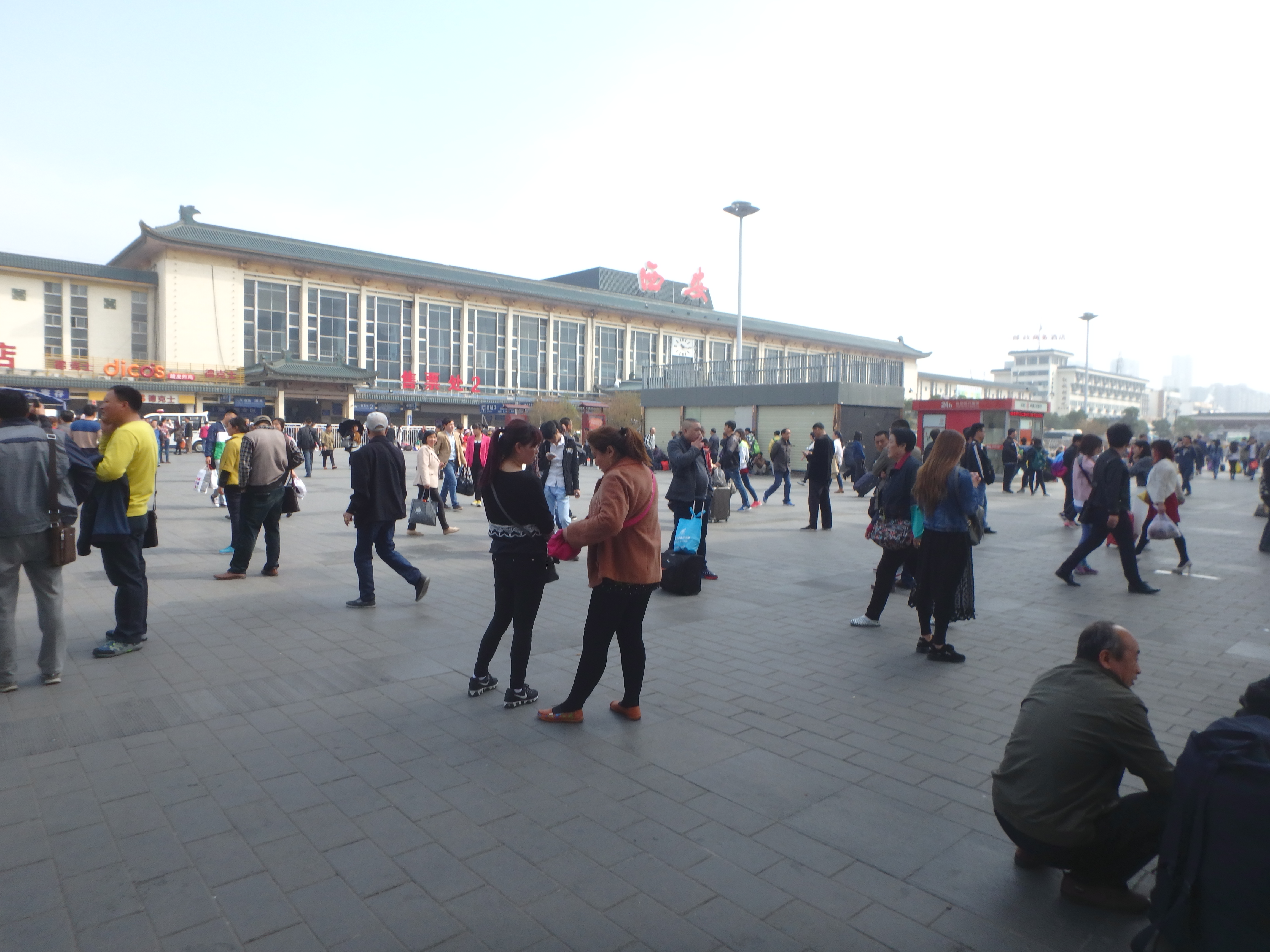
Getting there by bus is highly recommended and the best way is to find the special tourism bus #5 (Bus Number 306, white colour bus) running between Xi’an railway station to Terracotta Army museum. Please stick to Bus #306 as it is government approved and will alight you at the main visiting area, section #3.
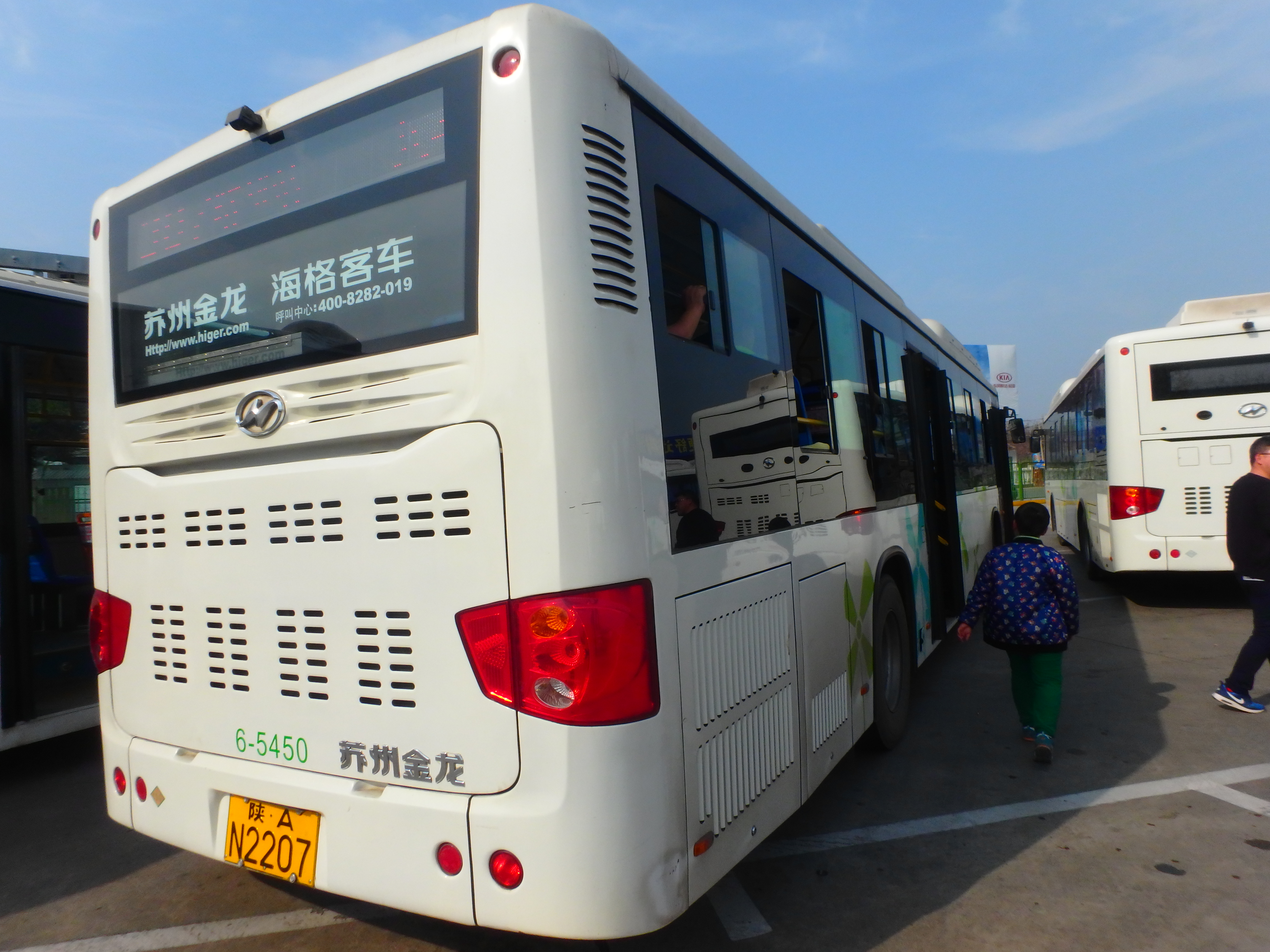
There are mainly the Green, Blue and White colour bus to Terracotta Army tourist spot.
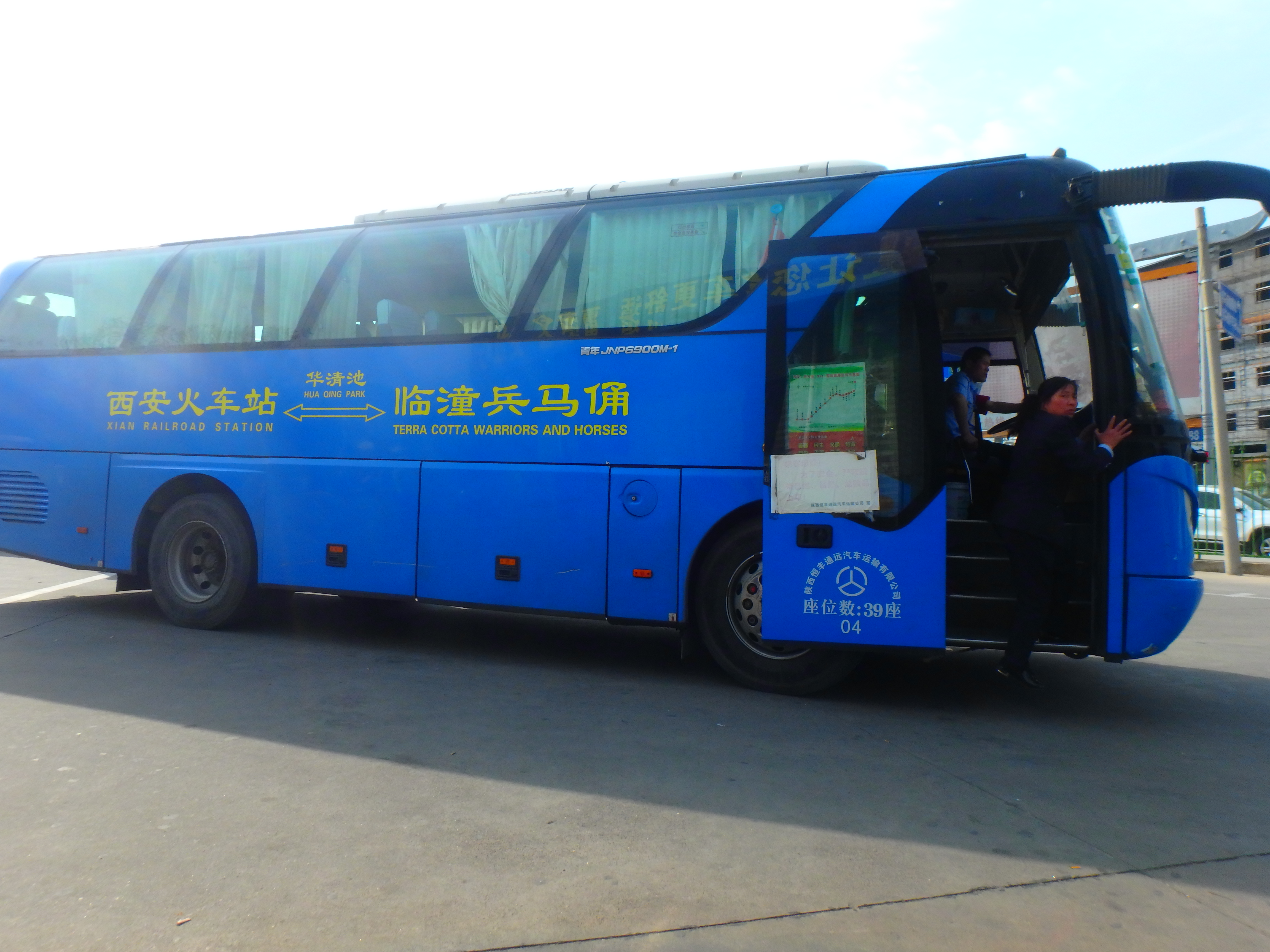
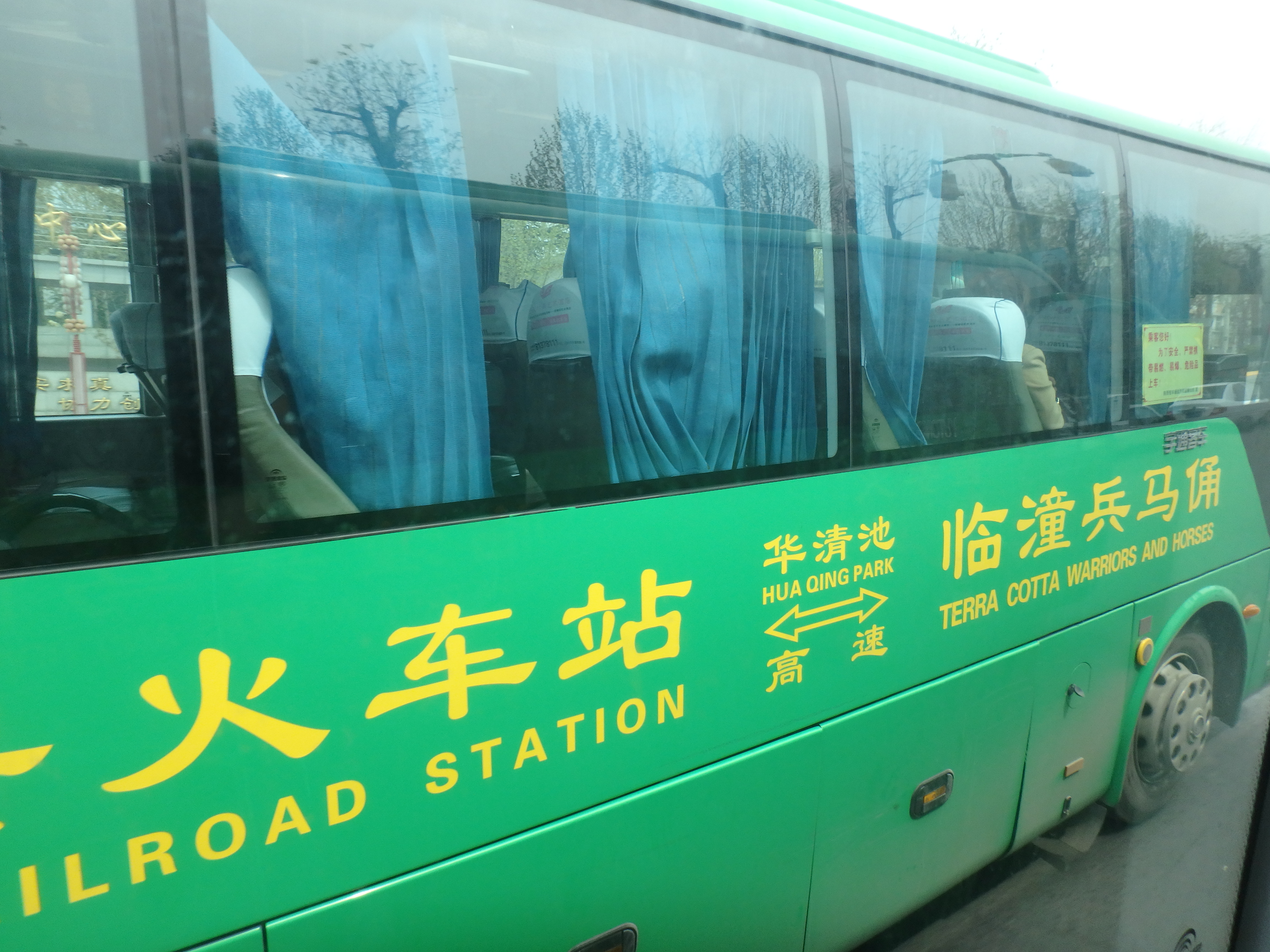
A lot of touts will be in the area preying on tourists asking them to take their transport to Terracotta Army. I think it would be better and more economical to take the public bus #306. The queue maybe very long, but one thing for sure is it moves quite fast with plenty of buses. So just queue up, soak in the atmosphere and before you knew it, you will have to board the bus. I have queued up for 15 minutes and there were many domestic tourists. There’s vendor selling bottled water and maps.
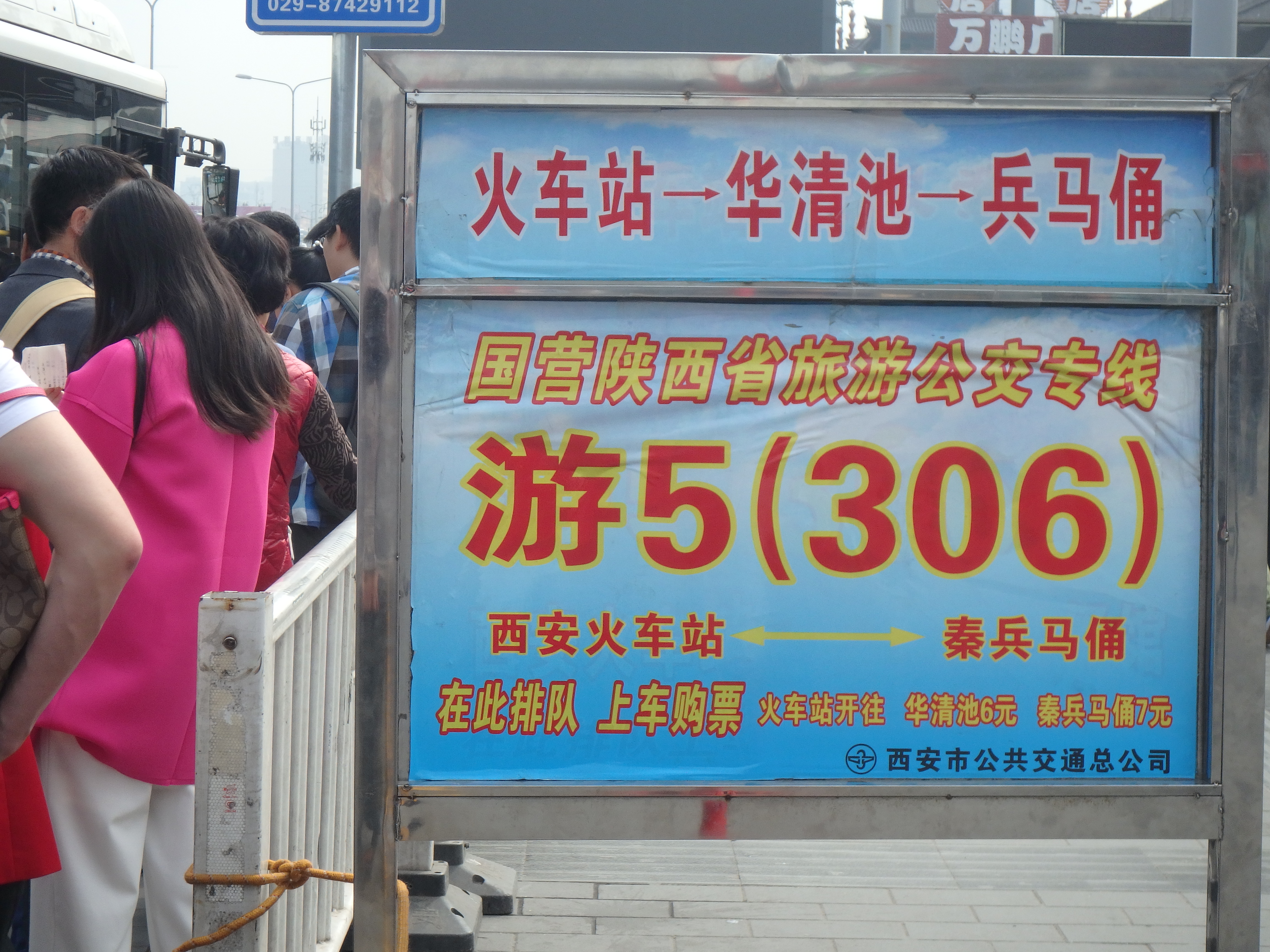
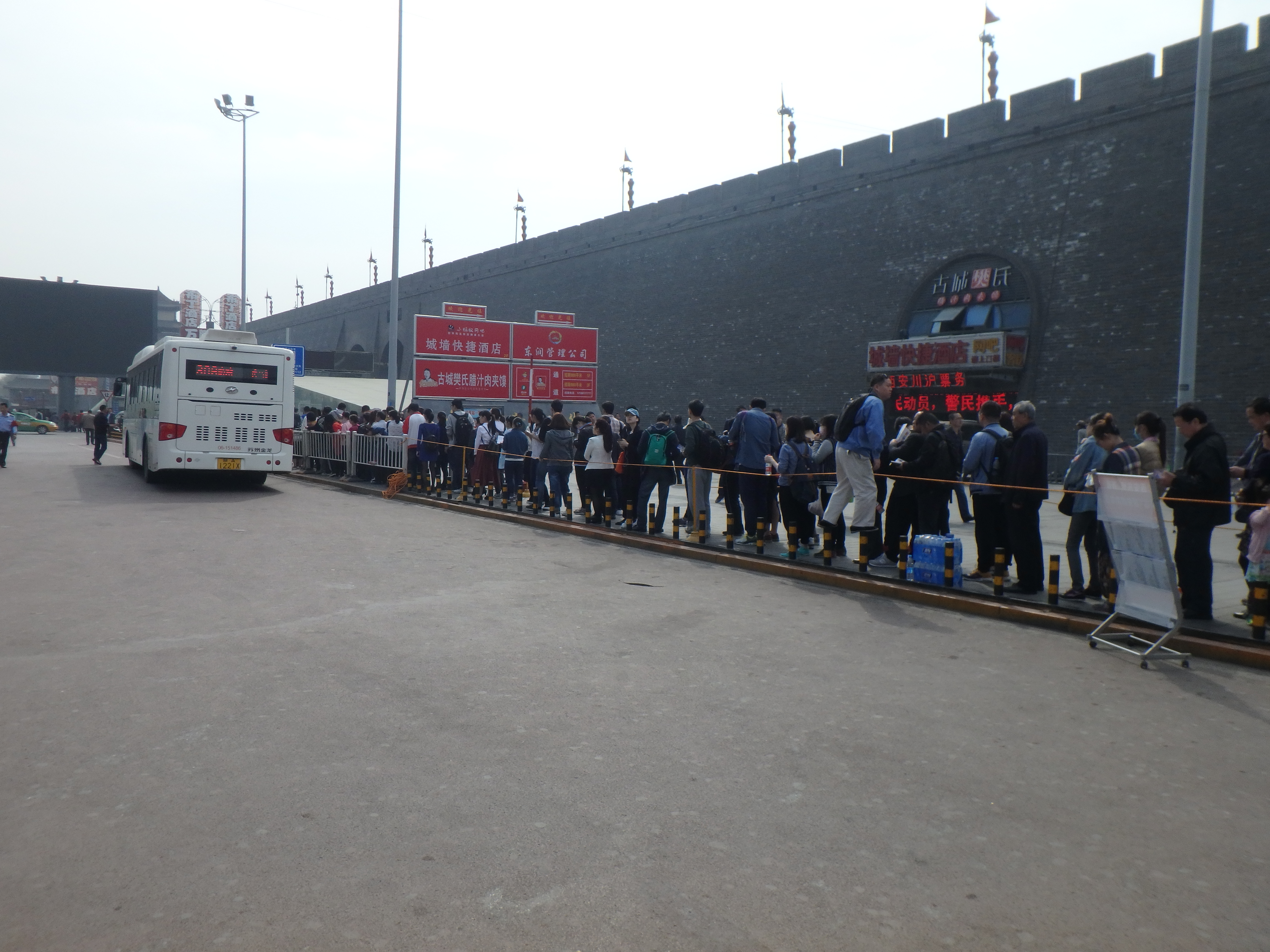
One do not need to buy a ticket in advance. Hop onto the bus and prepare to pay RMB7 per person. The bus will depart from the bus station and the bus conductor will give a briefing of the various stops along the route before going around in the bus to collect the fare.
Total Bus stops: 12
Bus Stop #1: Xi’an Railway Station
Bus Stop #8: Huanqing Hots Spring
Bus Stop #12: Terracotta Army (Last stop)
If you are just visiting the Terracotta Army, just sit on the bus and alight at the last stop. However, please note that Huanqing Hot Spring is a tourist attraction too along the way and the bus do not stop when on the way back from Terracotta Army to Xi’an. Thus, recommend to alight at Huanqing Hot Spring if you intend to visit. Pay RMB6 yuan only if you intend to alight at Huanqing Hot Spring first.
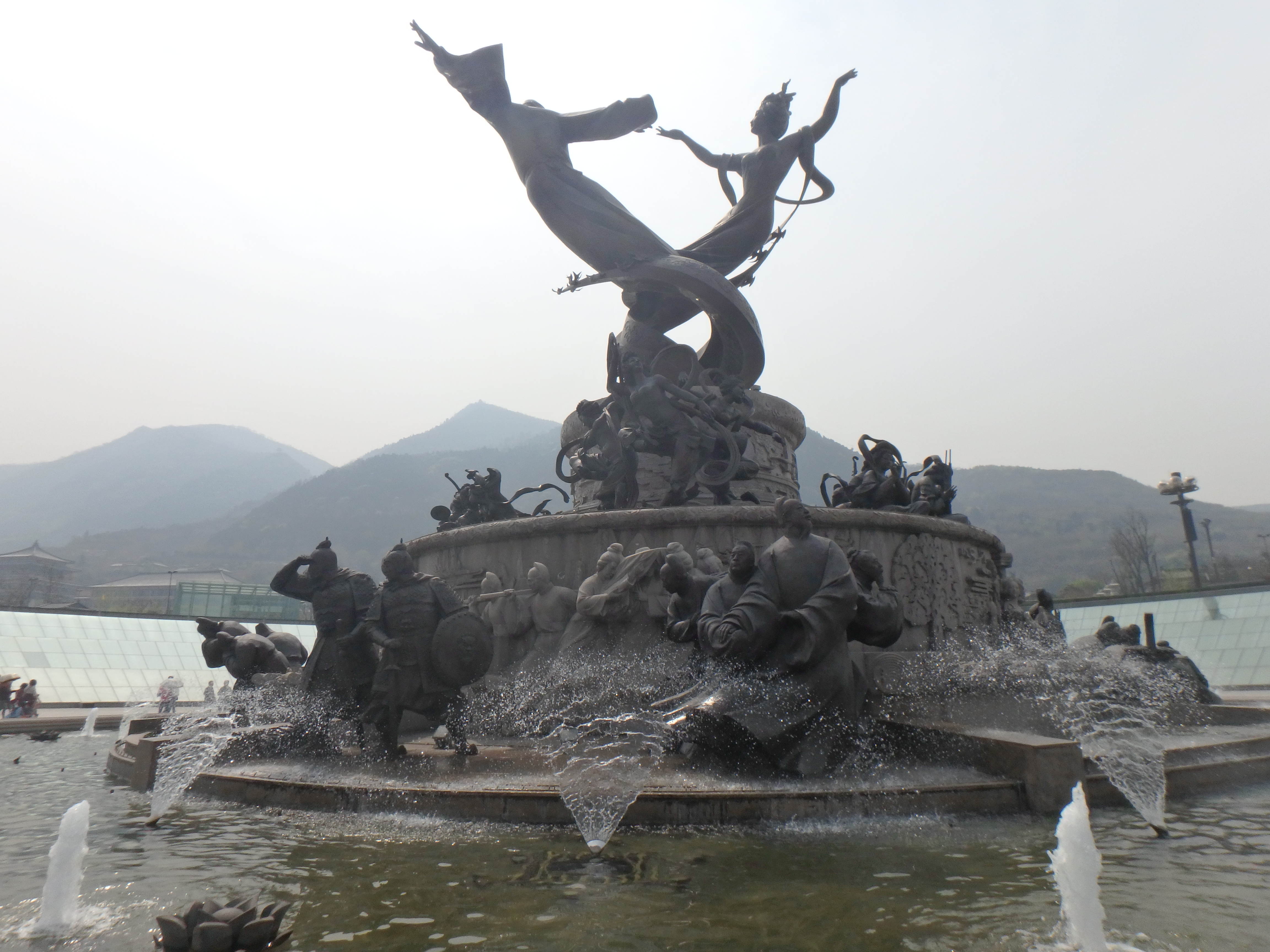
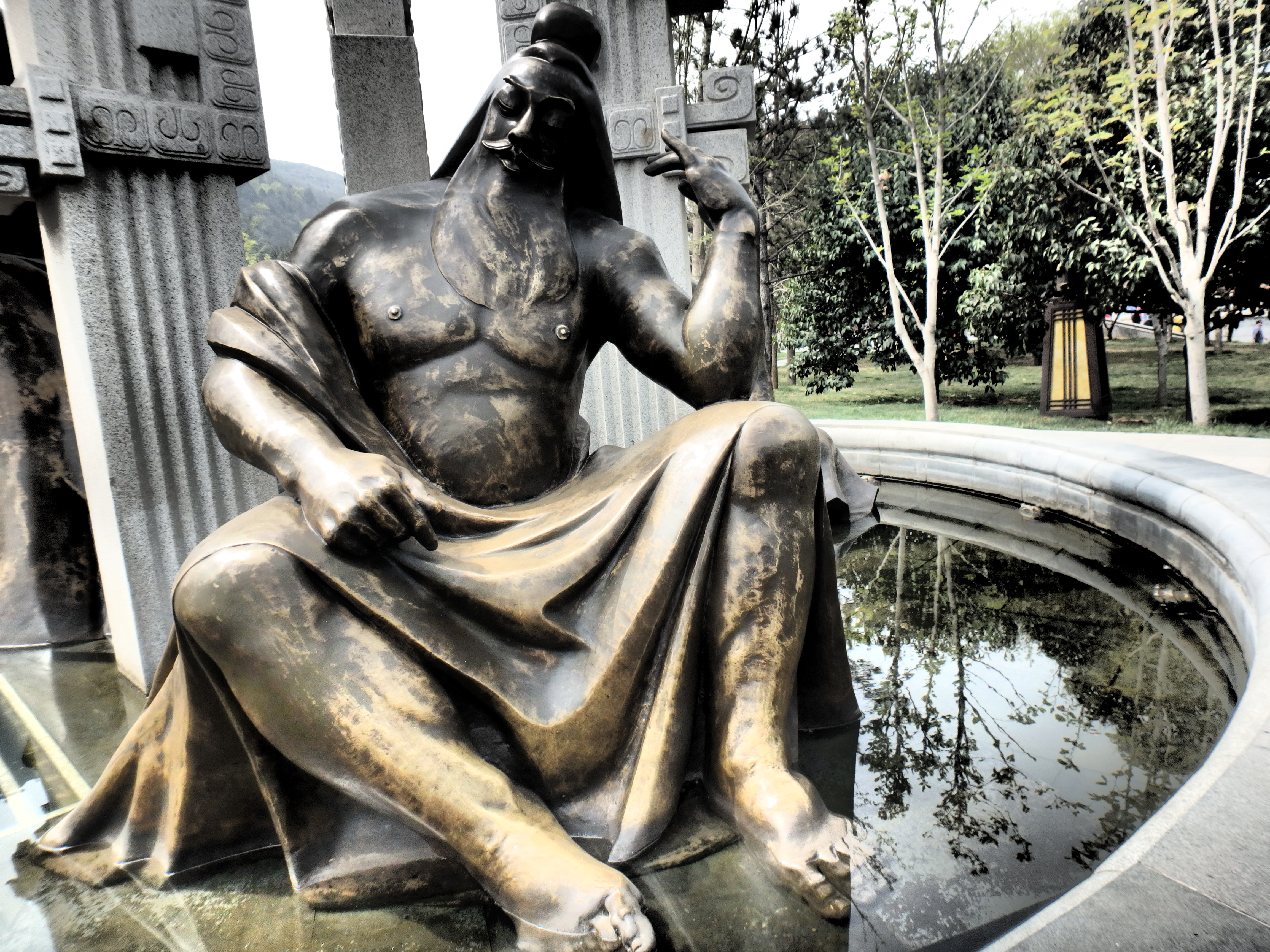
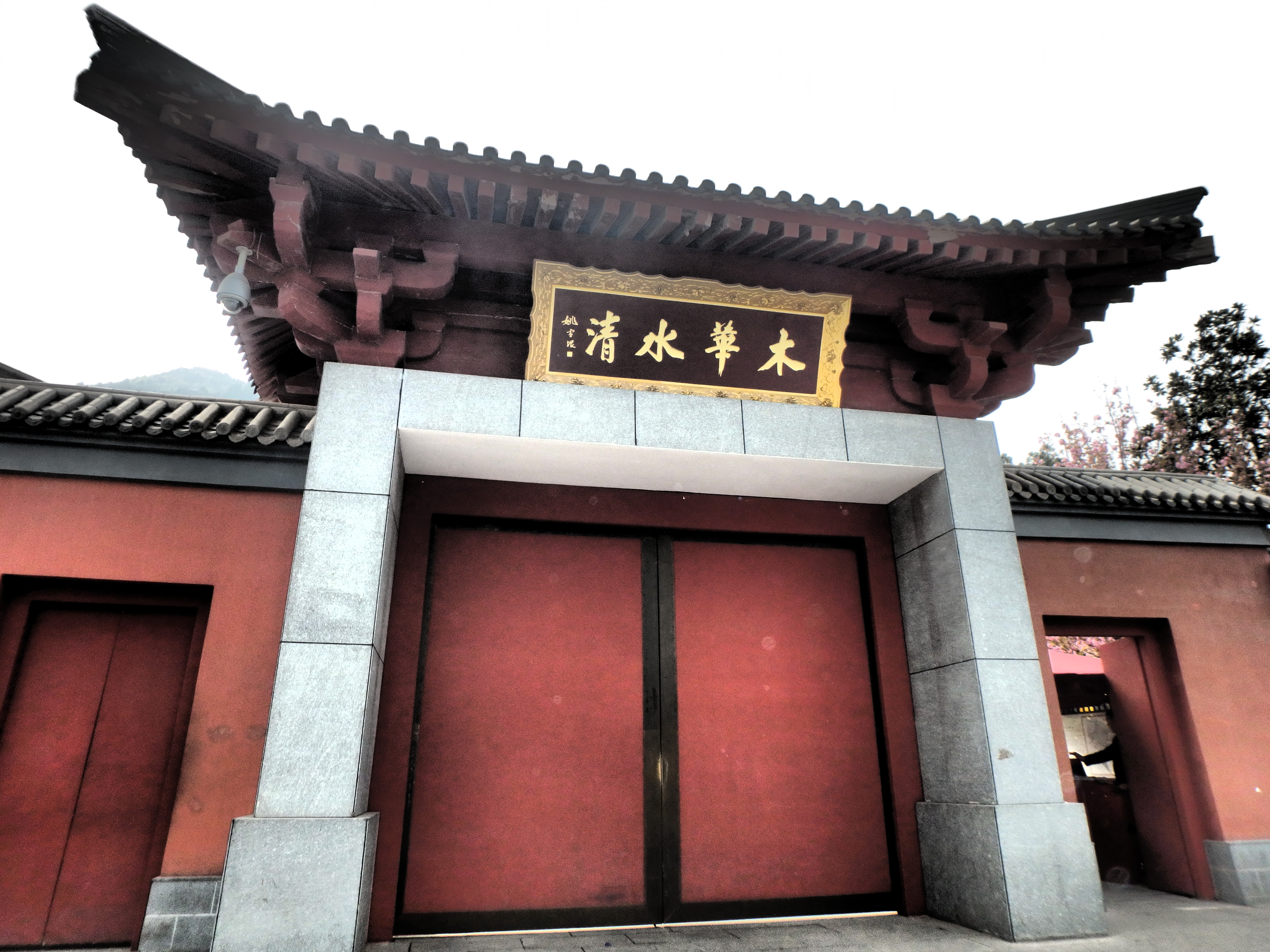
After which, go back to the bus station where you alight earlier to continue the journey of Bus #306 to Terracotta Army Museum. One have to prepare around 3RMB when you board the bus.
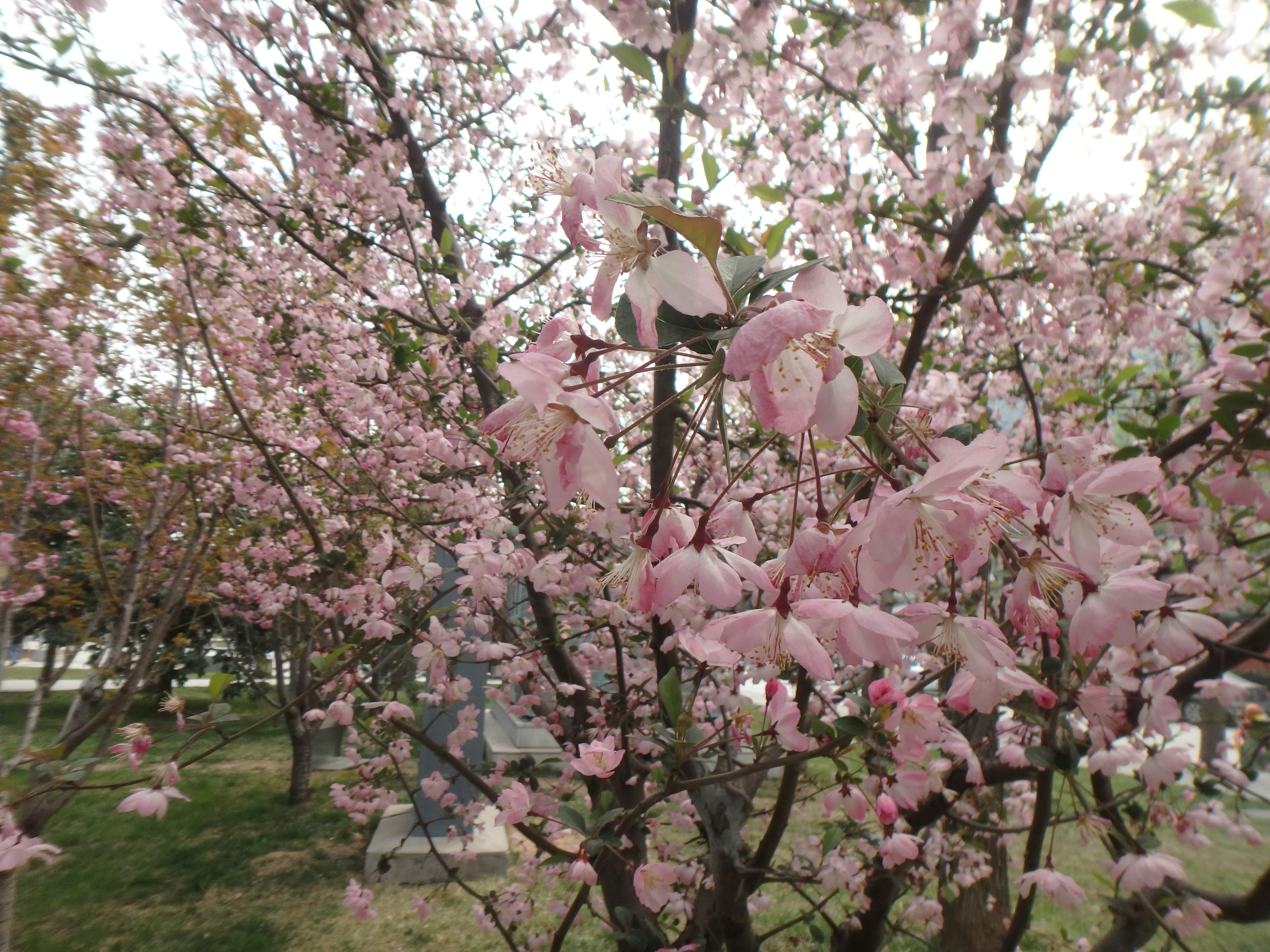
The Terracotta Army is divided into 3 section. They have named it section #1,2 &3. The highlight is area #3 with the main Terracotta Army museum consisting of 3 different pits in the area as well, where one can witness the vast pit of warriors.
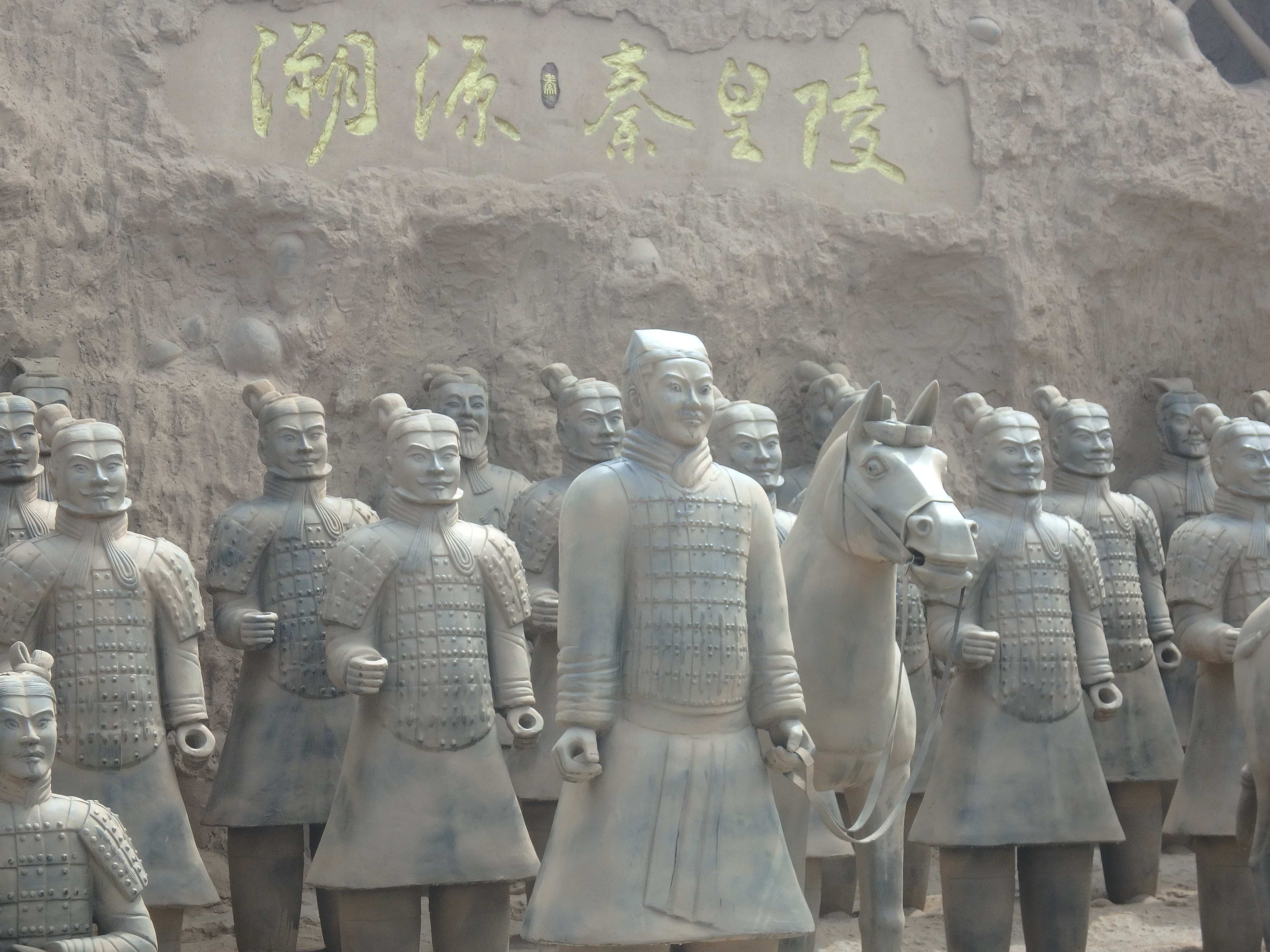
However, one can visit section #1 & 2 as well. I had to hire a private driver for RMB15 to ferry me around the different section as it will be about 2km between each section. I had visited section #1 which showcase the high tech visual art , sitting in a mini roller coaster ride watching the 3D movie shown on different screen as one ride along the darkness.
The cost of the ride is about RMB128, worth a visit with its state of arts and interesting show on display.
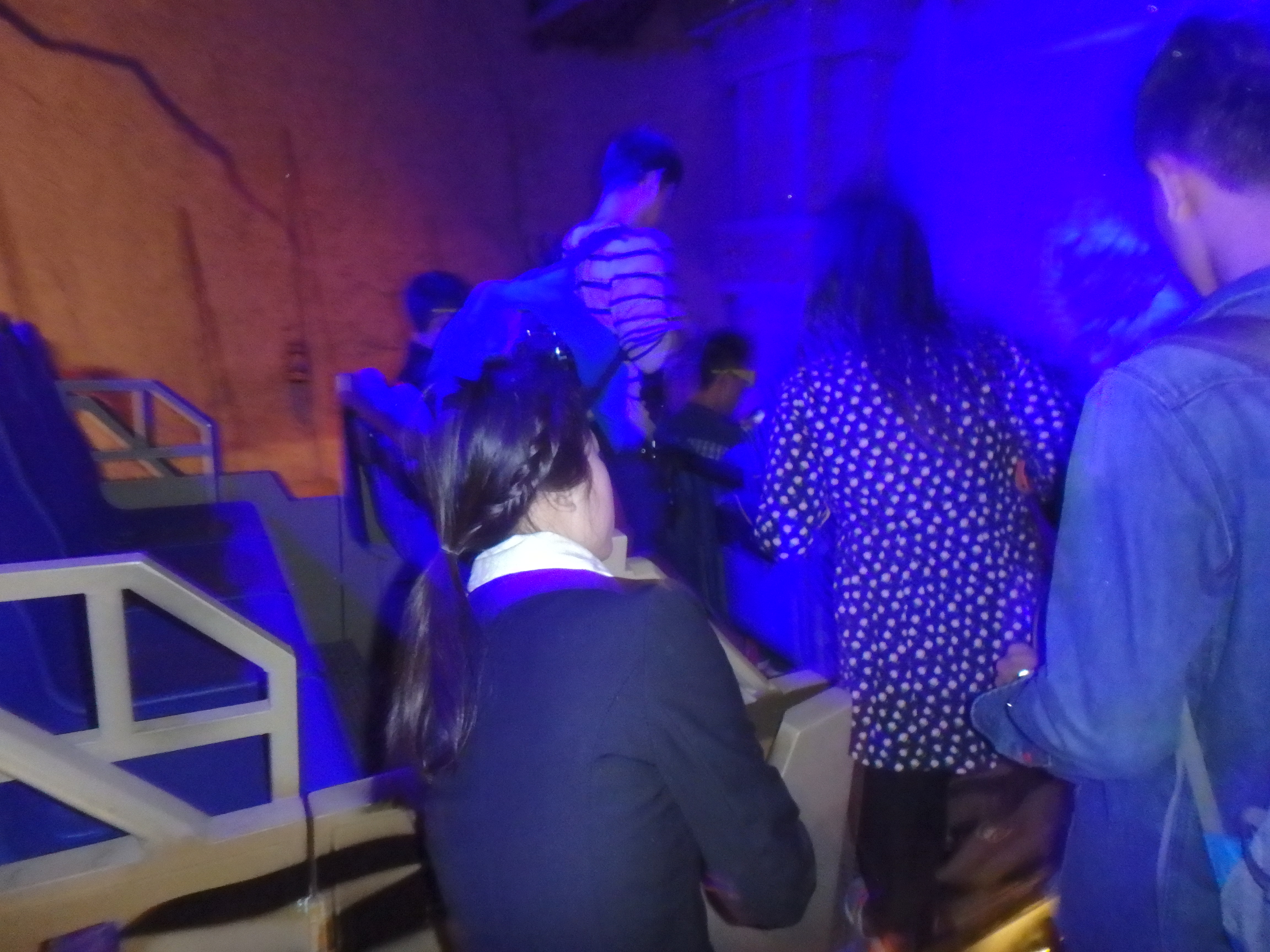
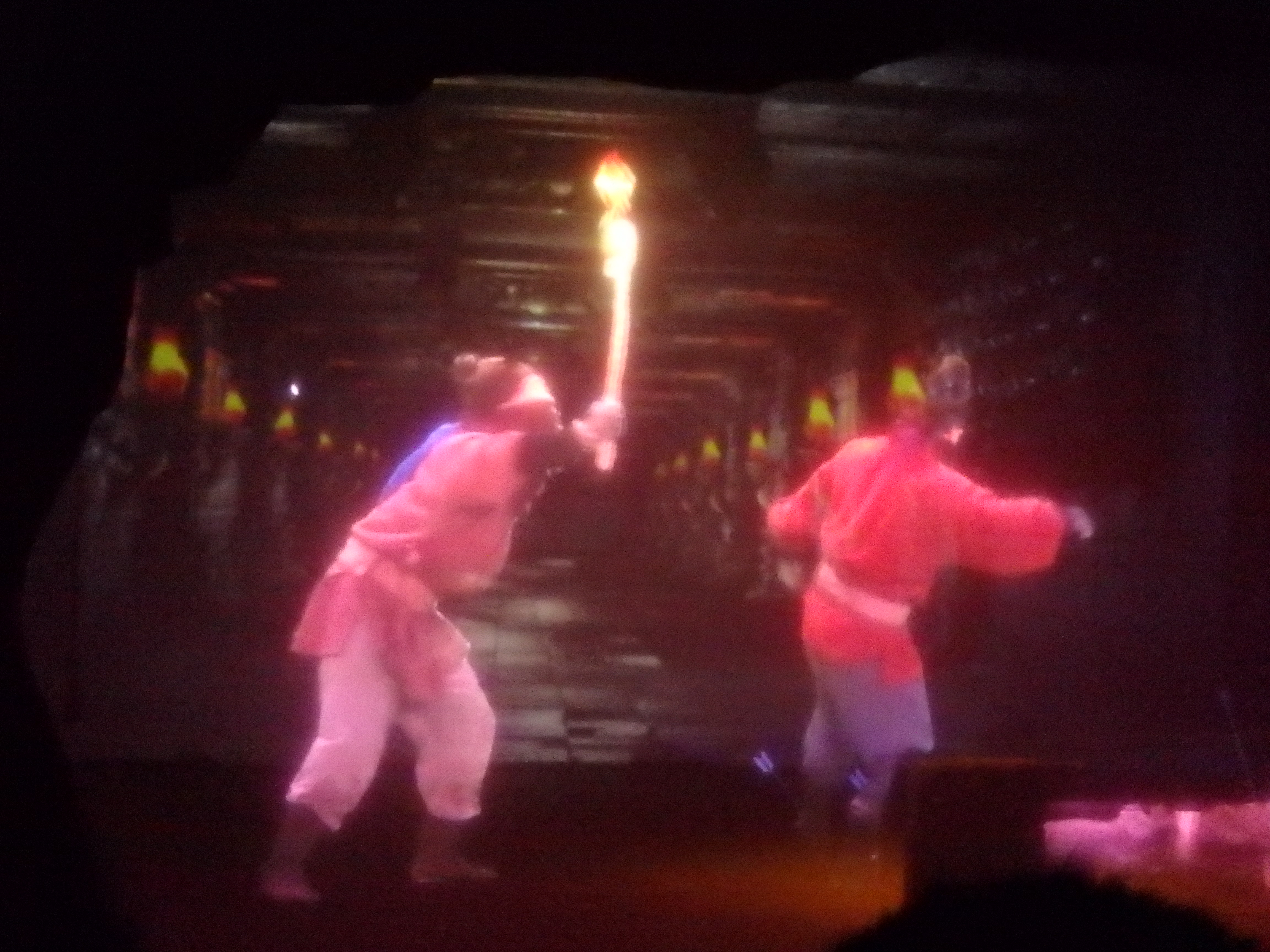
Section #2: I was told it was more of world well known sculptures for instance the Paris Eiffel Tower, Egypt pyramid which is made of clay on display. I did not visit at all so I was not too sure.
Section #3 is definitely the highlight, Terracotta Army Museum. There are total of 3 pits in this section. There is the largest collection found in pit #1. I suggest to visit the museum first followed by the surrounding pit #3, #2 and finally #1, from the small to biggest scale. There are tremendous amount of exhibits in the area and one could practically spend many hours. Be selective and ready to jostle with the crowd at pit #1.
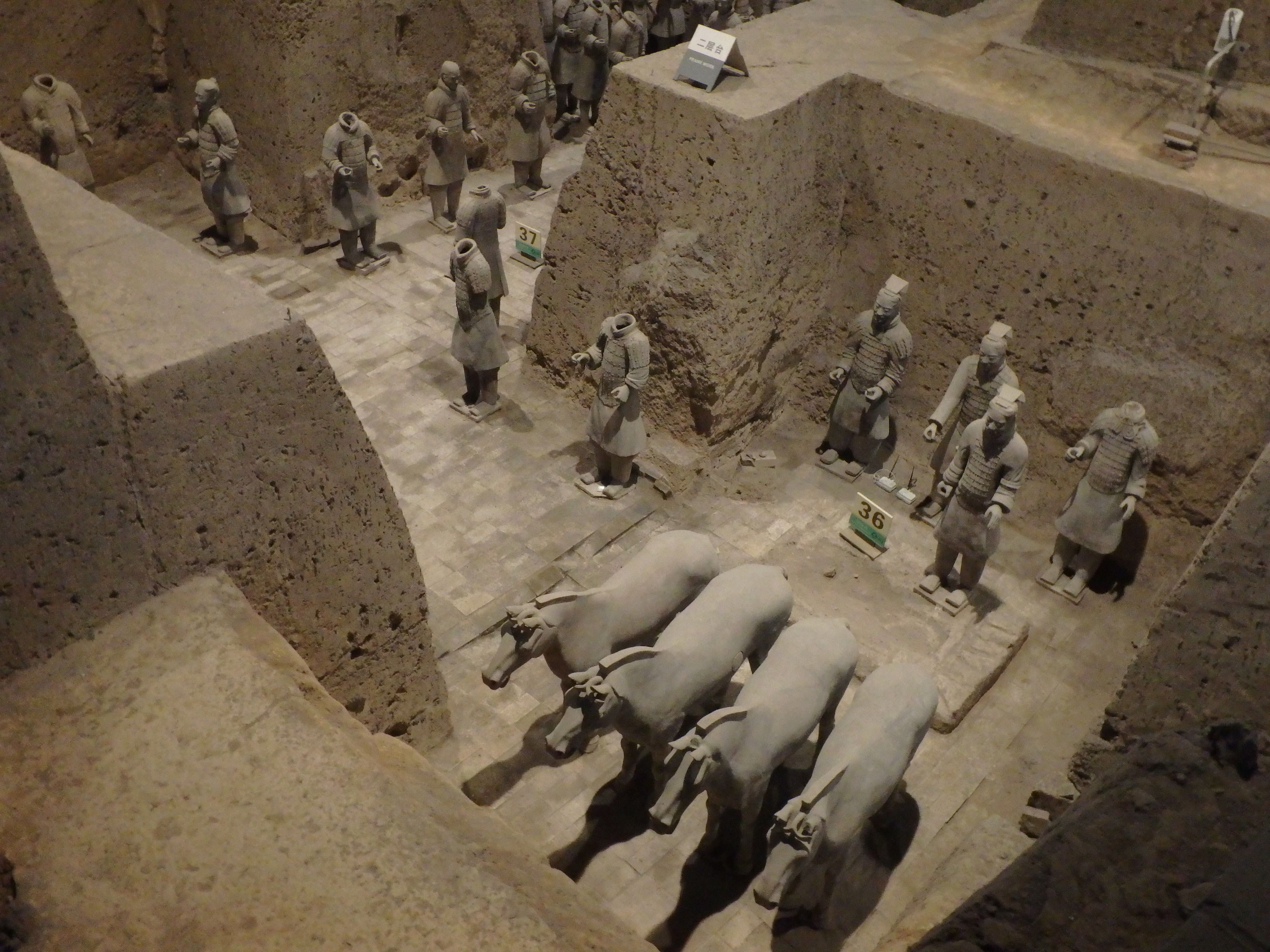

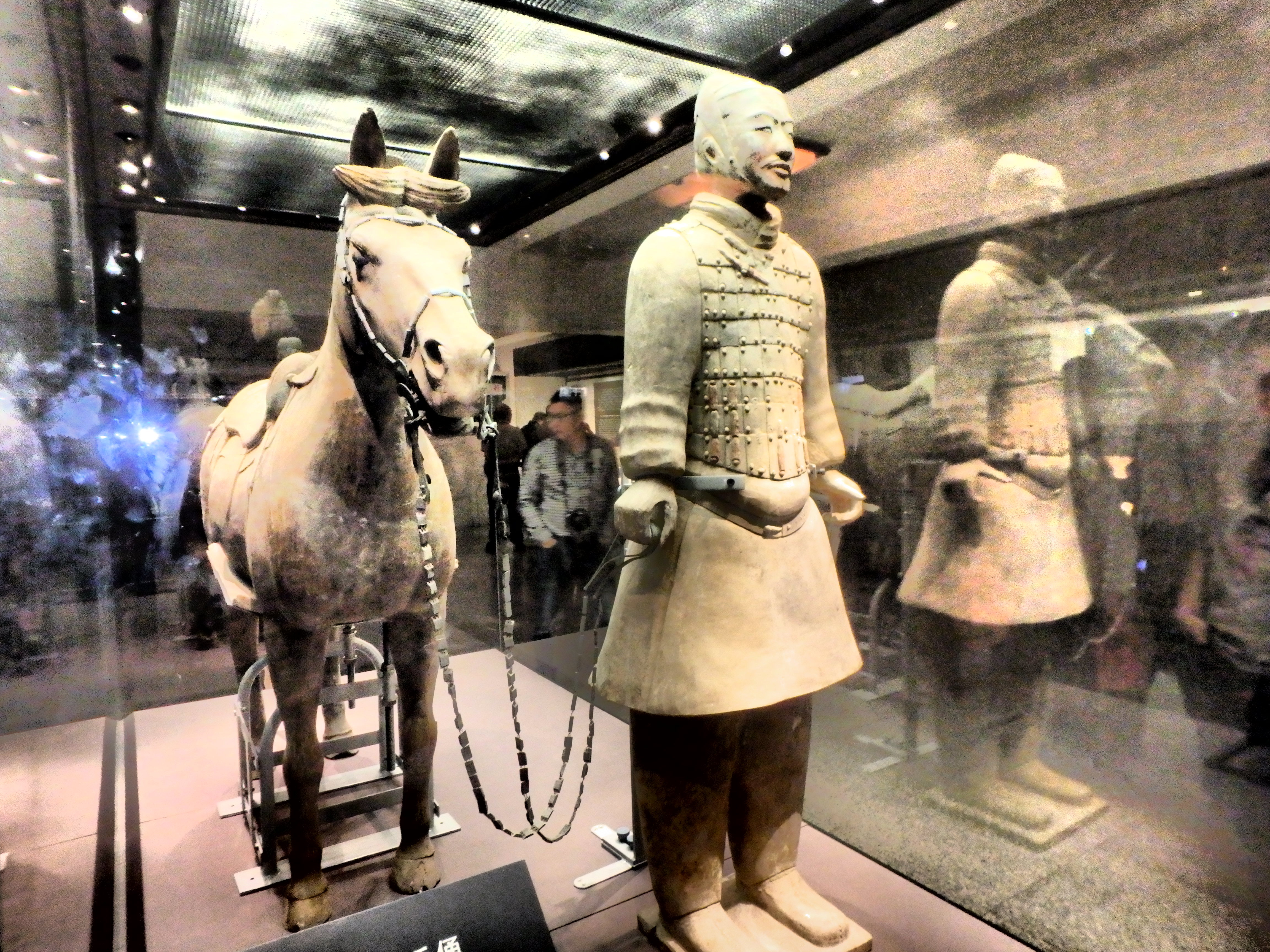
Big Goose Pagoda
After visiting the Terracotta Army, take bus #307 to Great Wild Goose Pagoda. It was about 70 minutes ride when I took it with the congested roads scene. The bus will not stop directly in front at the Big Goose Pagoda. It is recommended to ask or let people around you know that you are expecting to alight at Big Goose Pagoda.
Alternatively, you may like to take bus #306 back to Xi’an Railway station and from there take tourist bus #8 which connects one to Bell Tower, Small Goose Pagoda, Xi’an museum and Big Goose Pagoda.
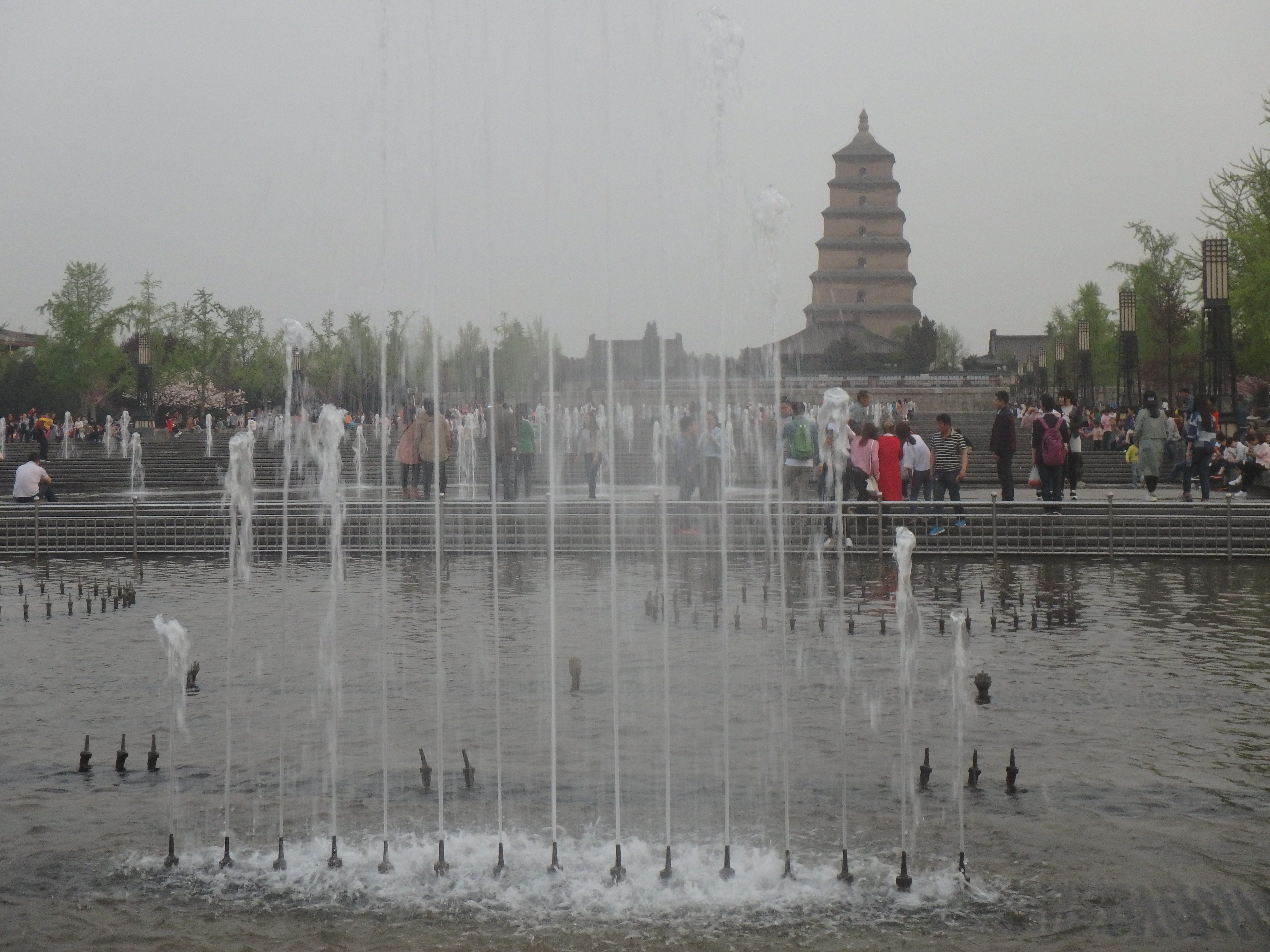
The Big Goose Pagoda is in fact well worth a couple of hours with a tall pagoda overlooking the city. Surrounding area include food street which is lined up with stalls when nearing evening time. I was there around 4.30pm and stalls were beginning to set up. Street food stalls can be found with exotic food such as worms, lamb blood on offer.
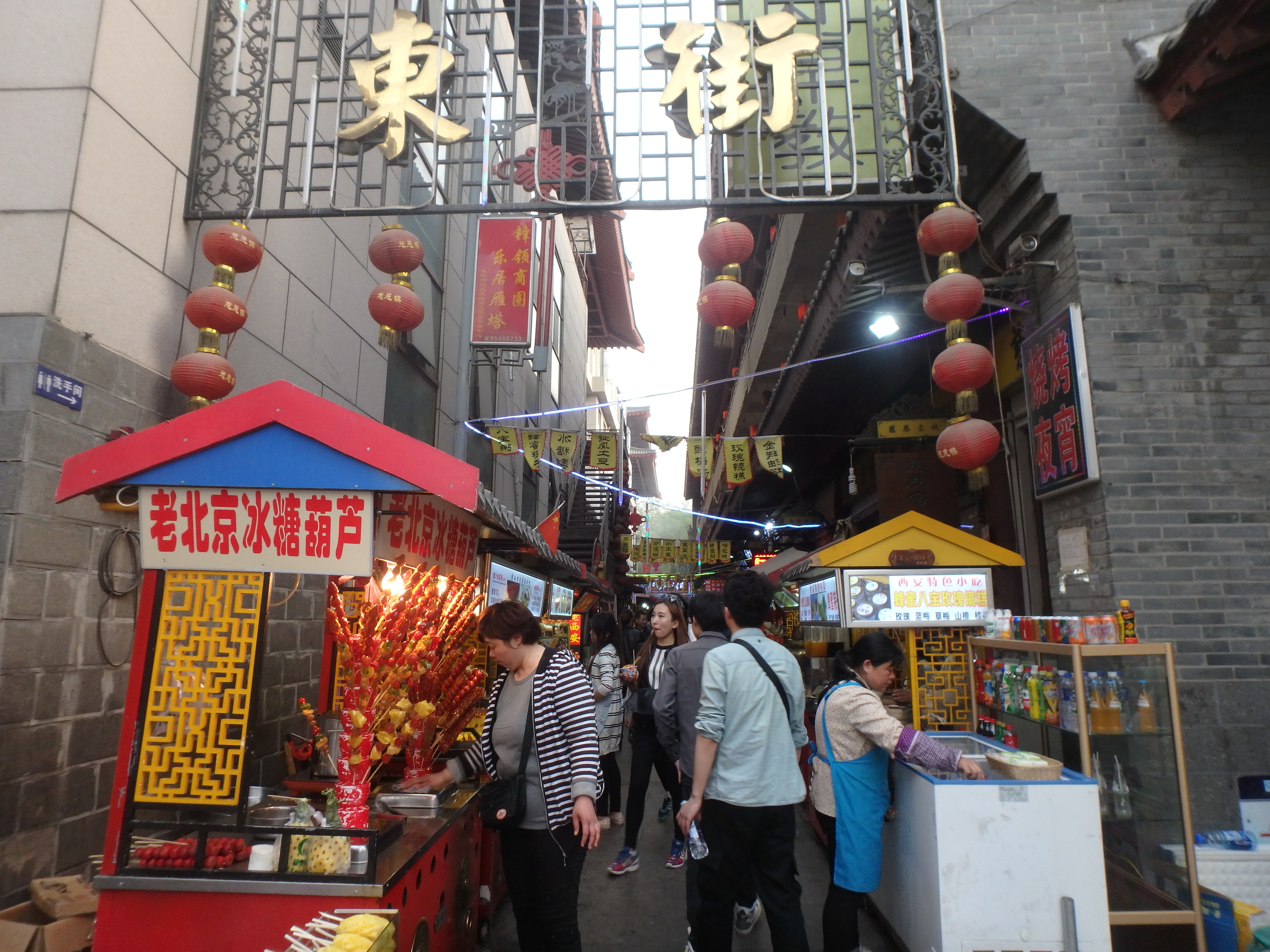
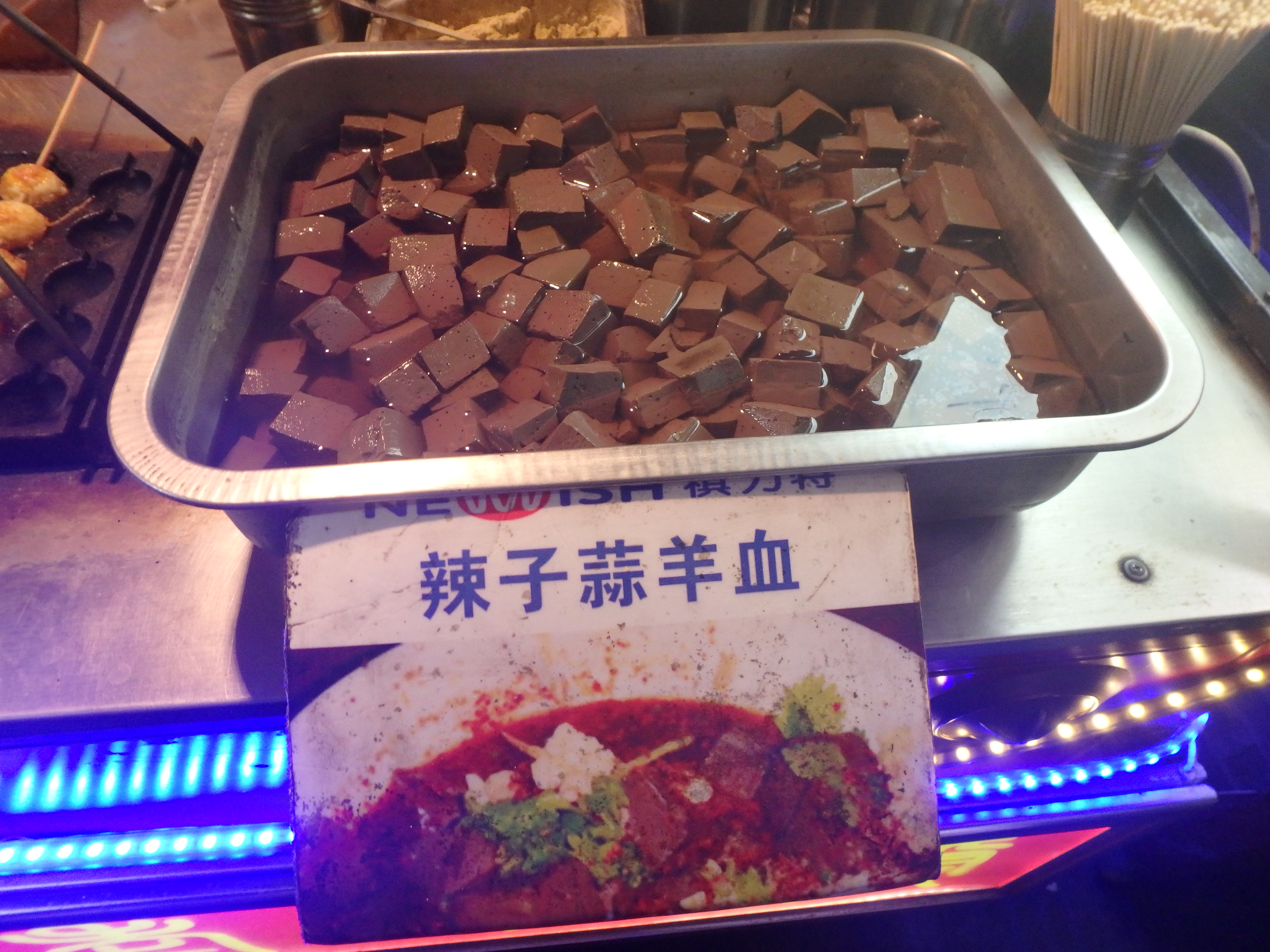
Due to my curiosity, I tried the lamb blood mix with chilli oil. It was not bad, worth a try!
The free water fountain night show will start exactly at 8.30pm and will last 20 mins till 8.50pm. Gentle note, to be there about at least 45 minutes earlier to reserve a spot for yourself. There will be an incredible huge volume of crowd when I was there jostling for space. Sit near the 2nd section, not too high or too low either to have the best spot. Be careful when it nears showtime around 8.20pm when the police/ army officer will shout at everyone to move a bit back and not to sit on the side.
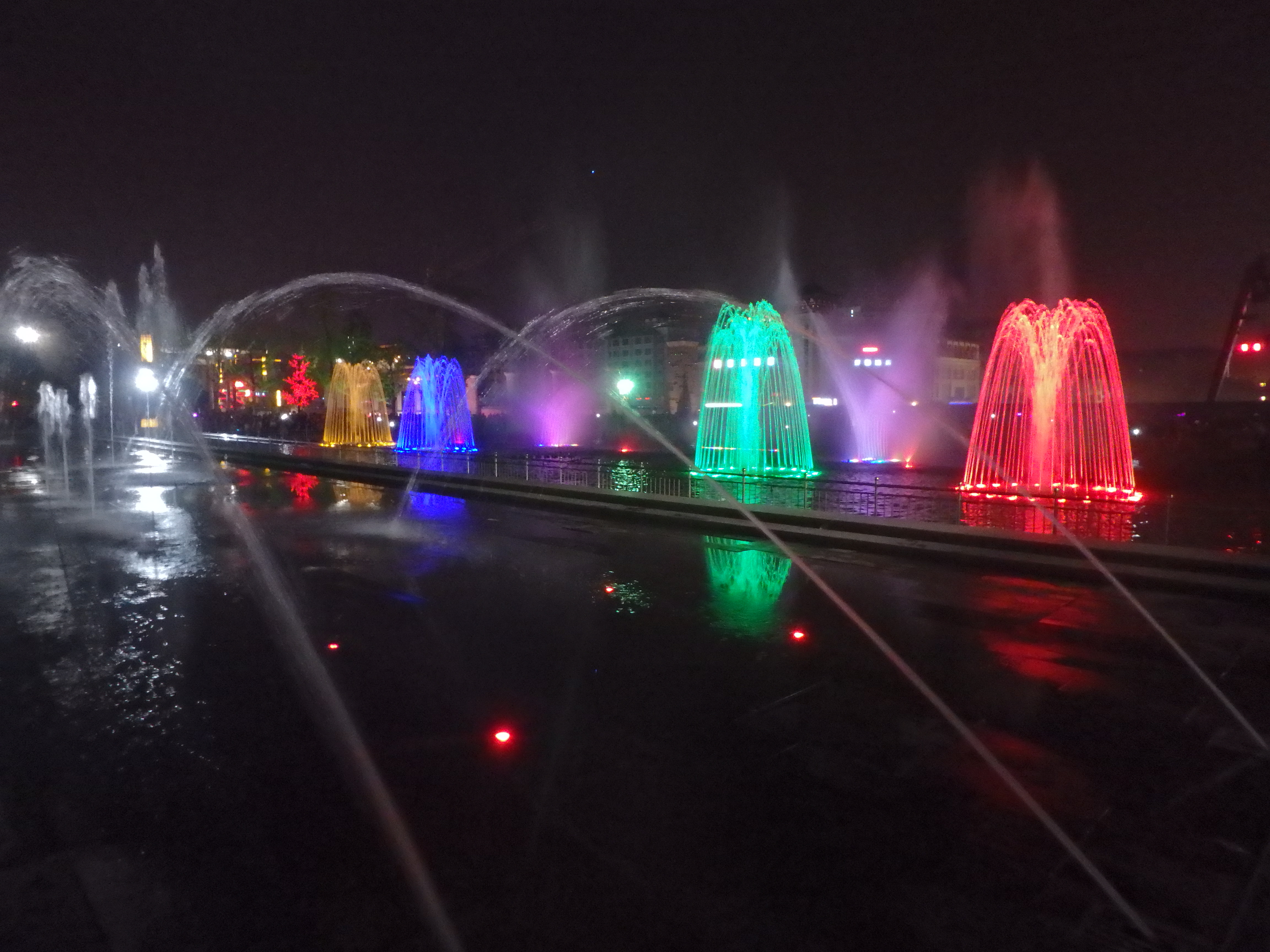
From Big Goose Pagoda, take bus #609 which will then brings you to Bell Tower, South Gate to witness the amazing night scene. Alight near to South Gate bus station and walk down to Bell Tower.
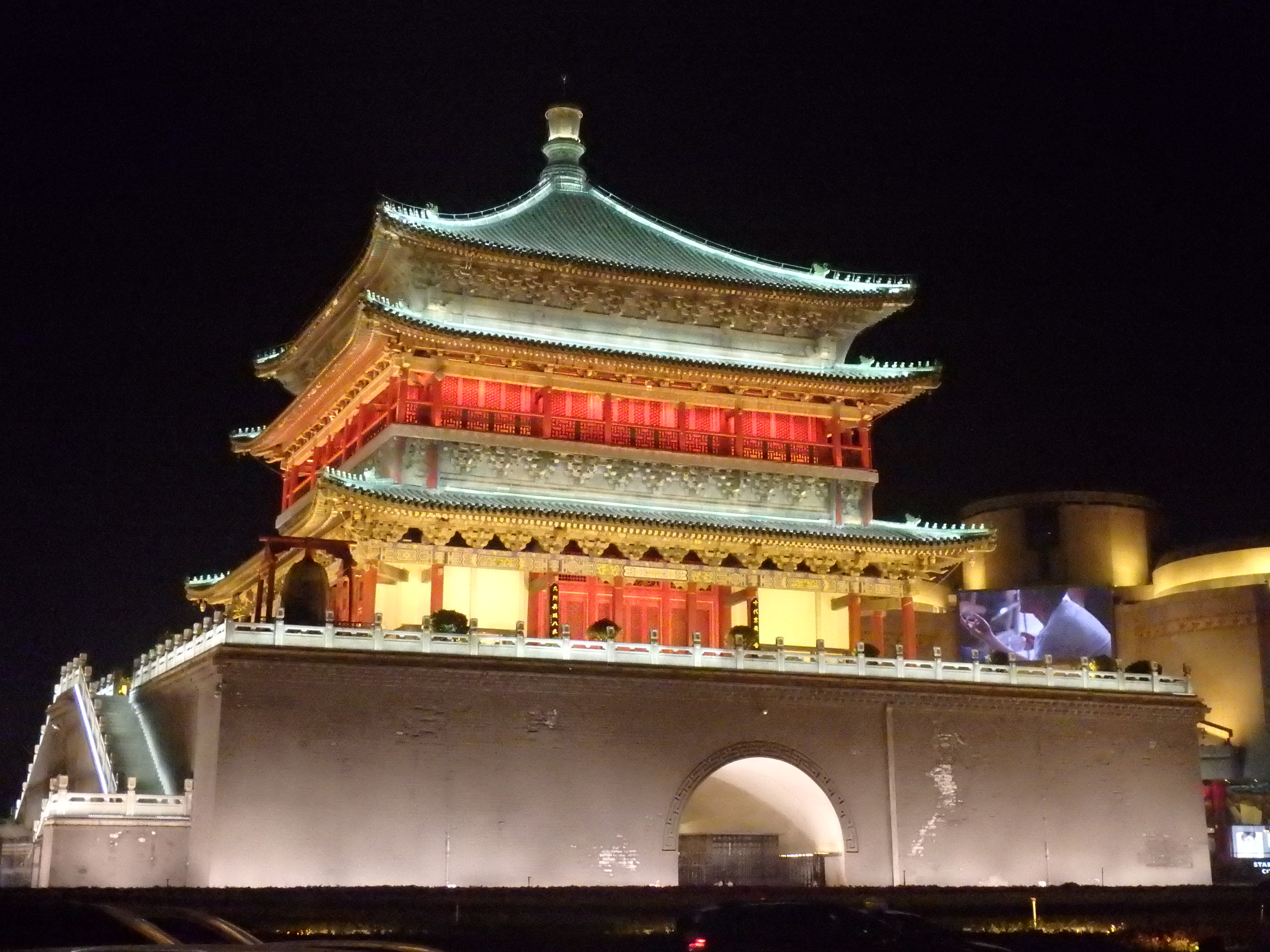
The night scene of Xi’an city is equally stunning and you should visit the Bell Tower surroundings. Live music, street artists can be seen in the vicinity which will definitely keep you entertained.
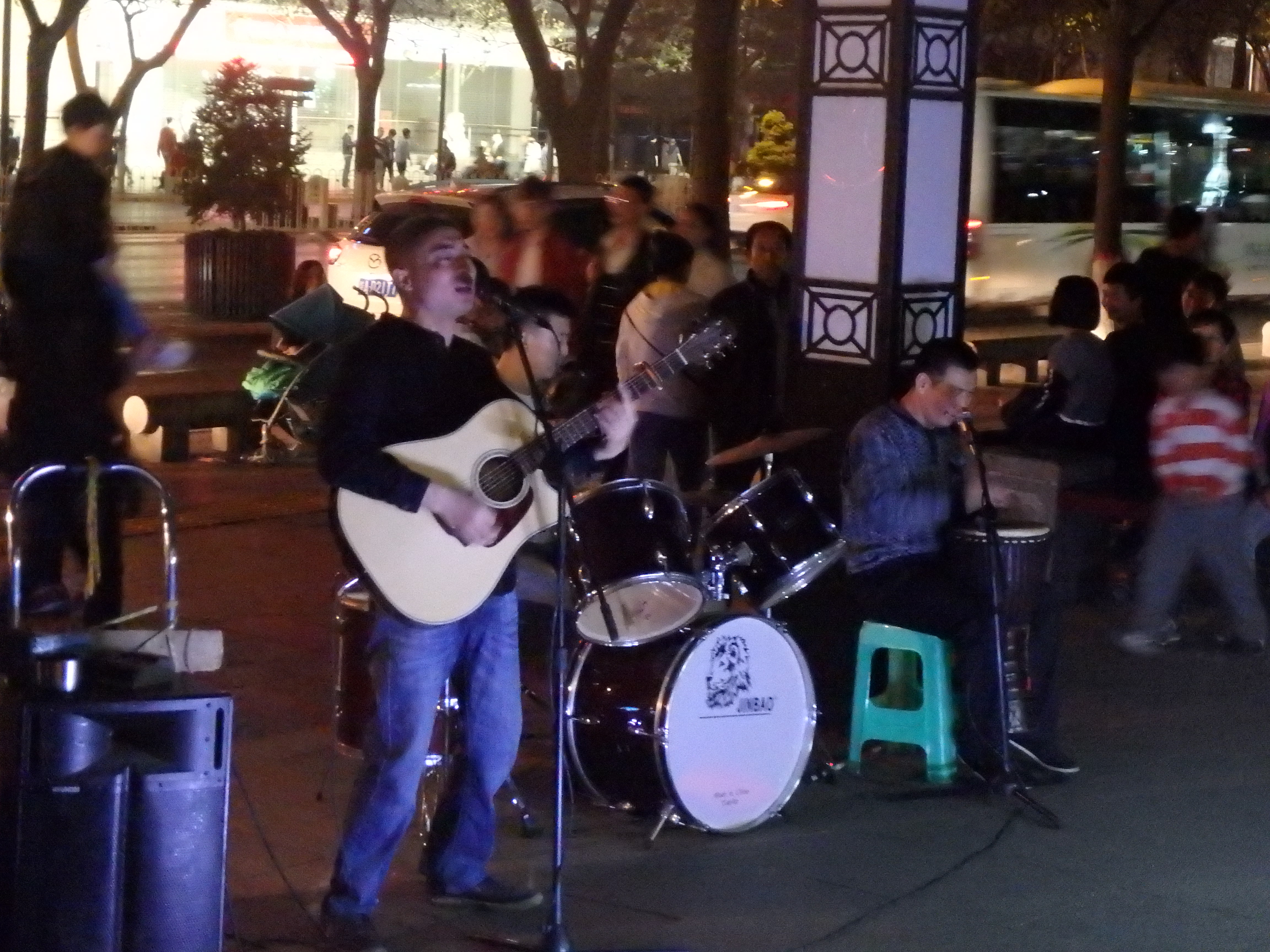
From Bell Tower, one is within walking distance to the Muslim Street Food Bazaar. This has got to be the place you have to be in the night. Tonnes of food are on offer and you will be spoil for choice. Be careful with your bags thou with the huge flow of people. Some good try would be the Lamb stick that Xi’an is famous for.
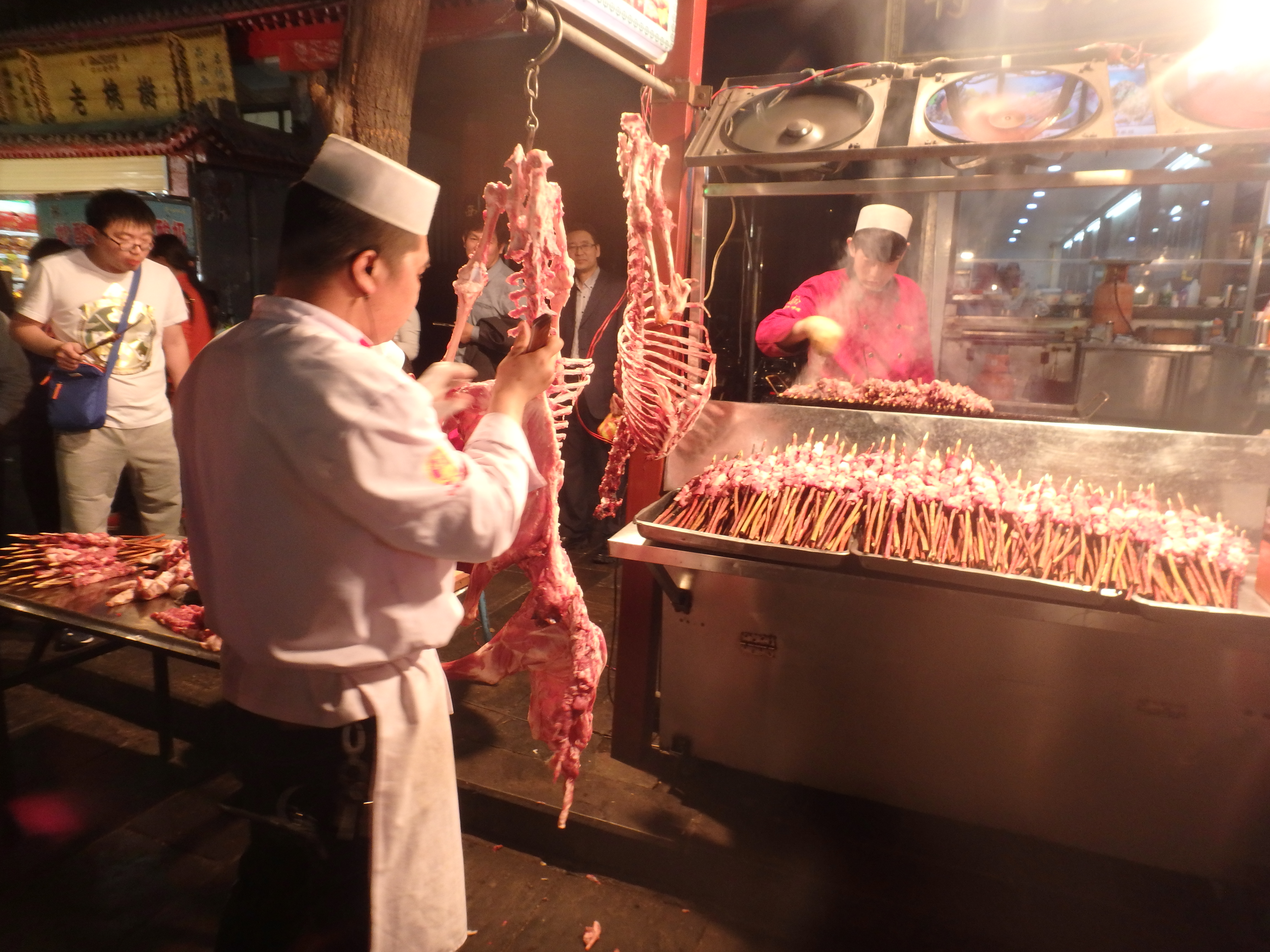
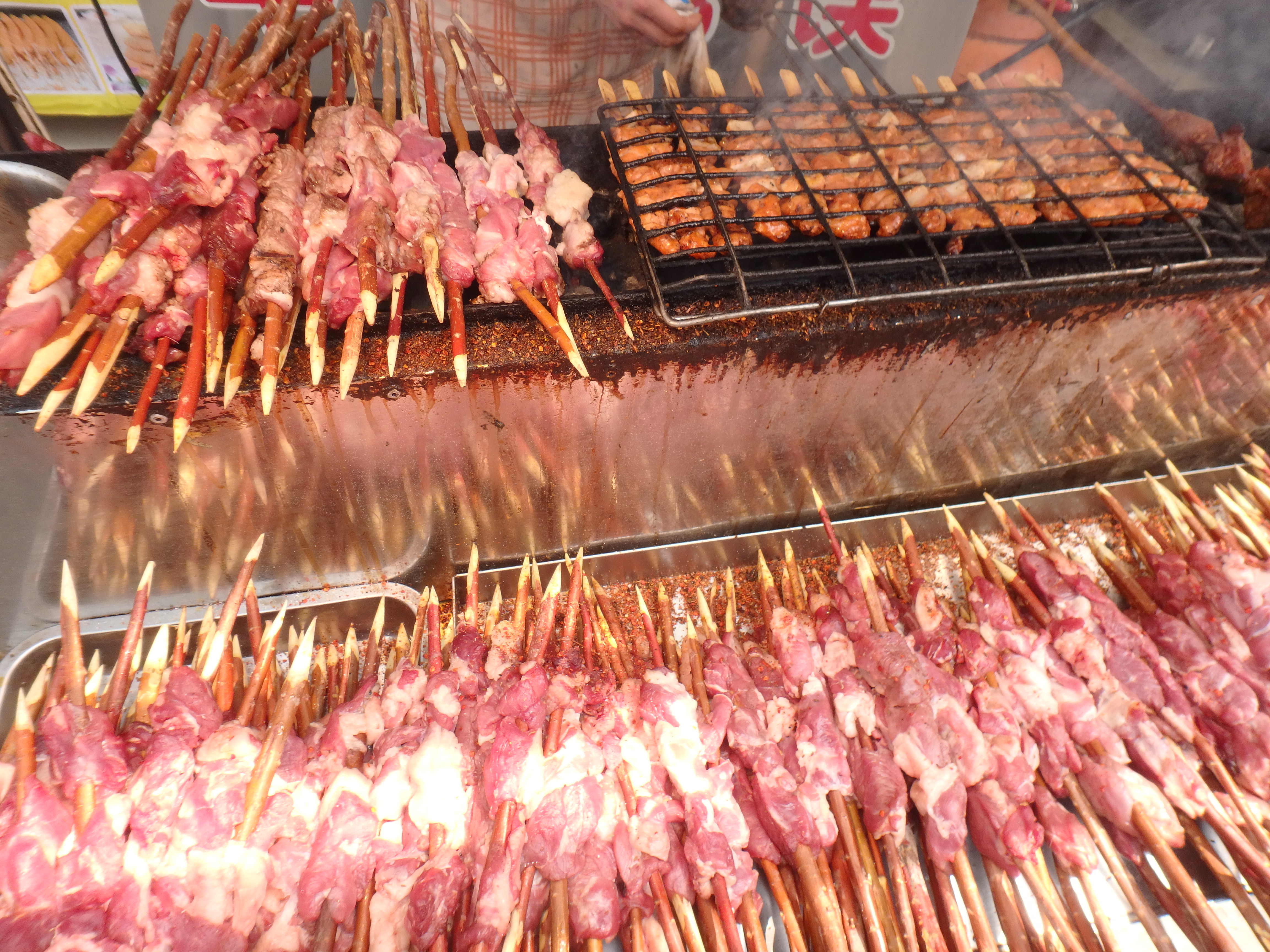
With the lamb meat and other finger licking good food in our stomach, that marks the end of hectic Day 1 in Xi’an.
Day 2
7.30am: Visit Nanmen
8.30am: Rent bike for 2 hours
10.30am: Return Bike & return to Muslim Street
12pm- 3pm: Lunch & visit The Great Mosque
4pm: Back to Airport via airport shuttle bus
As like in many tourist attractions in China, it is often many visitors at famous site. So in order to beat the crowd and at the same time enjoy cooler morning weather, it is good to start the day early.
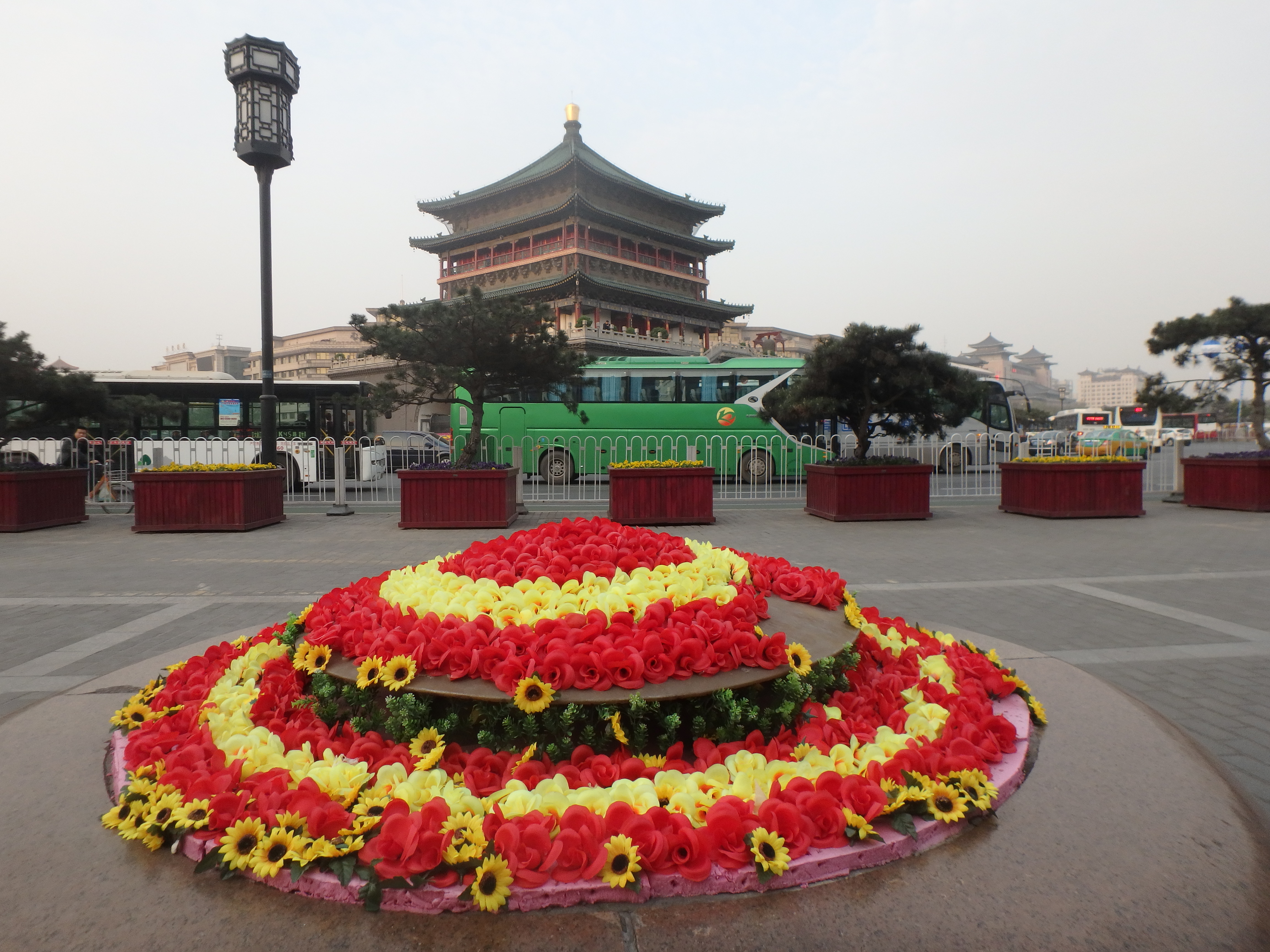
I had walked from my hostel in Muslim Street to Zhong Lou (Clock Tower) to have glimpse of the majestic city walls. After which, it is only 10 minutes walk to Nan Men (South Gate) in Xi’an. Basically, the ancient town of Xi’an is protected by the 4 city walls. To the North, it will be near the Xi’an Railway station. To the South, it is often seen as the gateway to Xi’an. In the middle, it is the well known Bell Tower, best to visit at night.
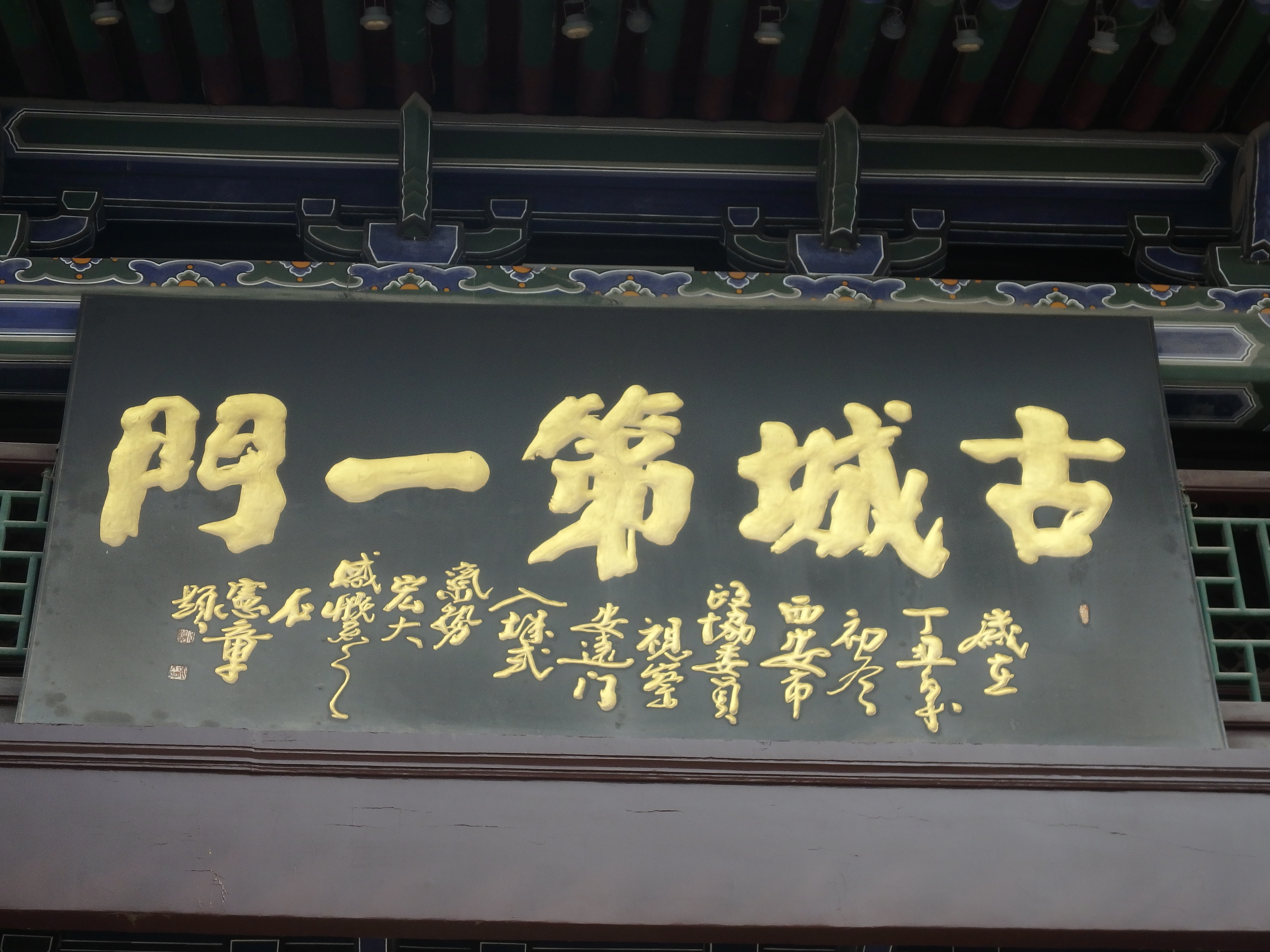
Nan Men
Entrance fee to the Nan Men (South Gate) is RMB 54 per person. It is worth a visit and step on the largest and best preserved city wall in China. It is a 14km loop whereby people, cyclists, joggers gathered and one of the few places to pedal with total freedom without fear of vehicles beside you. There are 4 watch towers in facing North, South, East, West direction with it being built during early Ming Dynasty.
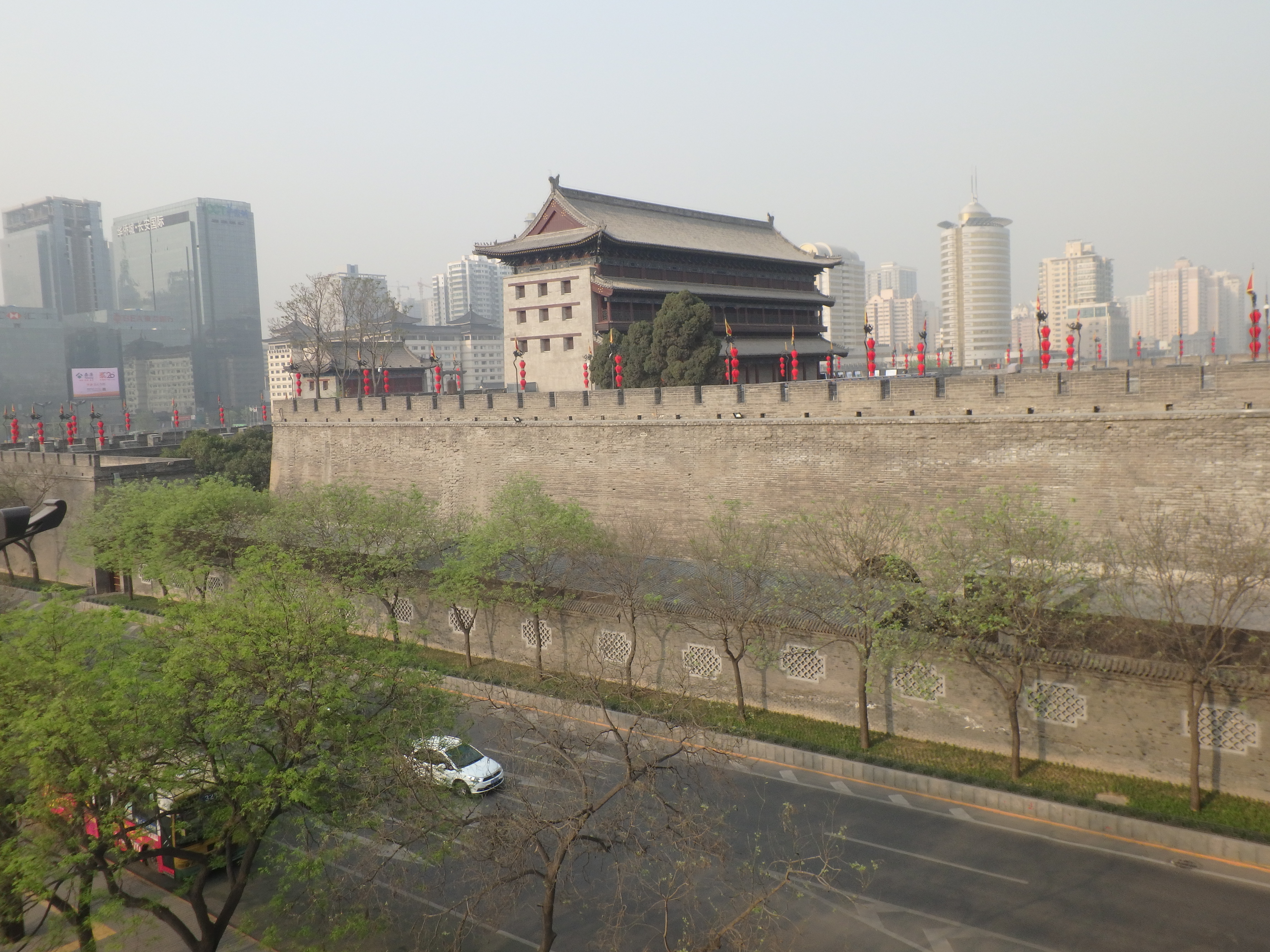
South Gate is the best place to begin and end one explorations because the bicycle rental center open the latest. The standard time of renting the bike is 2 hours. You may wish to extend. I took 2 hours and beginning I had made many stops witnessing the daily life of the Chinese people from above the walls.
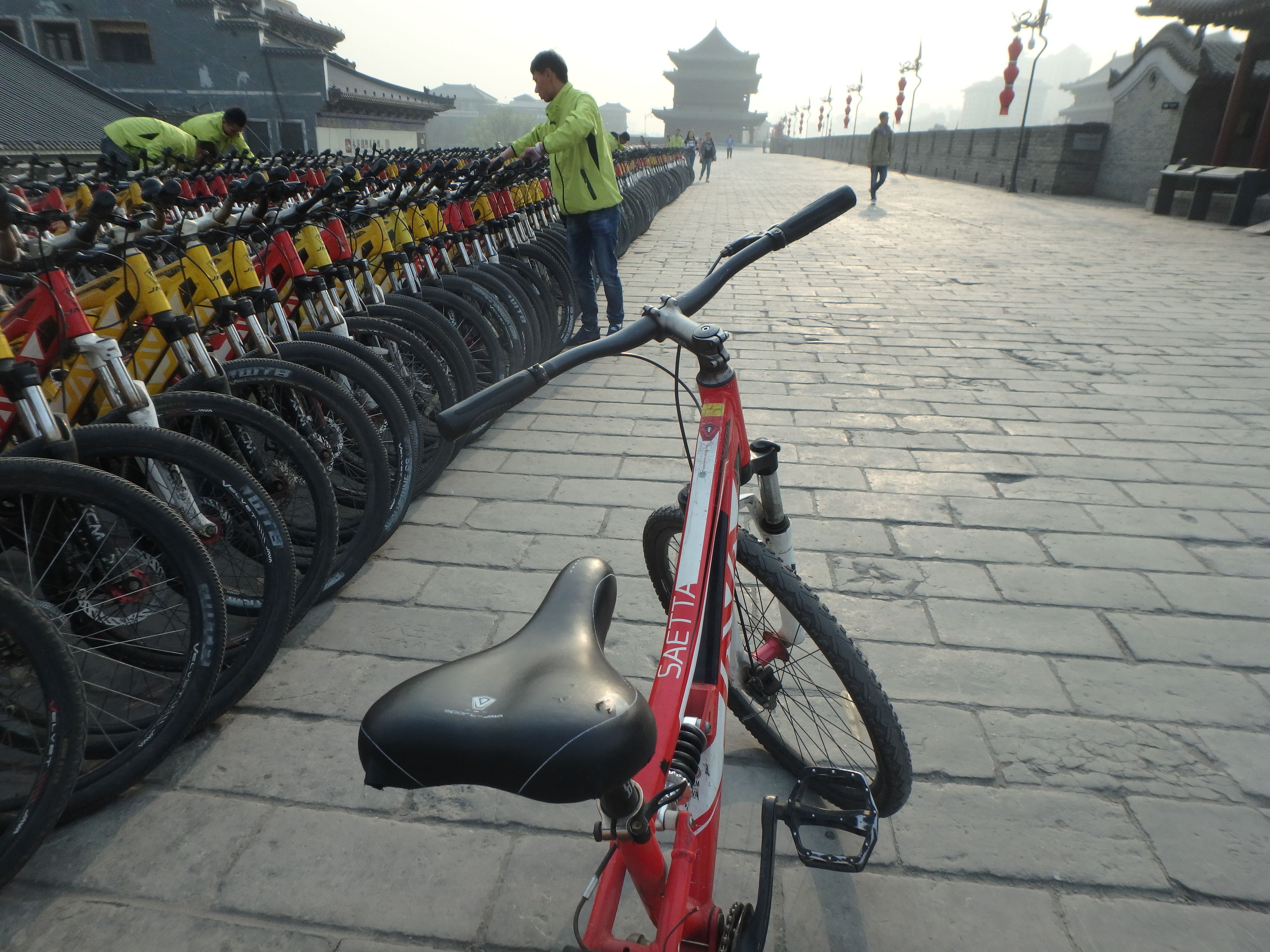
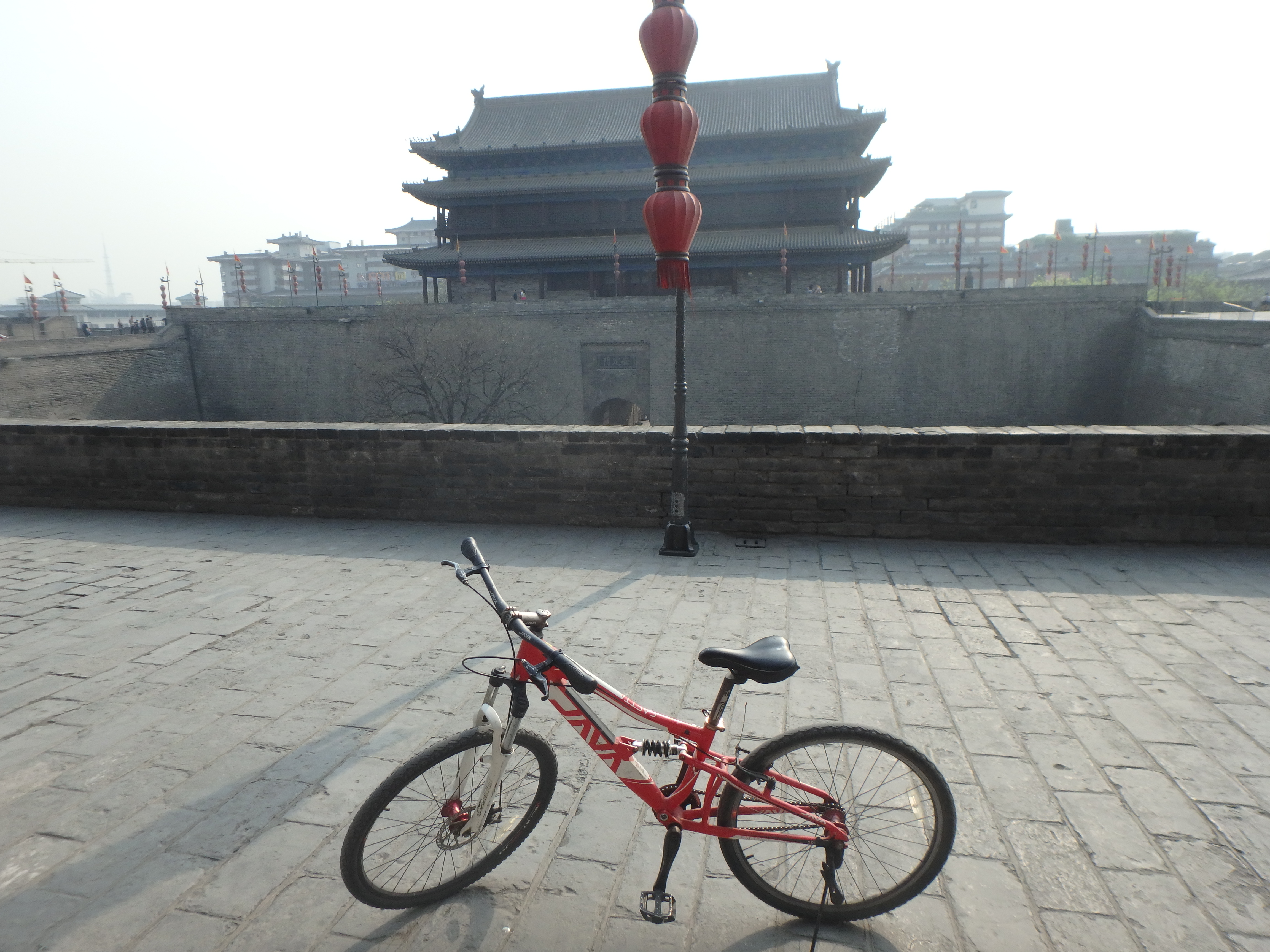
Fish market, fruits on sales, people executing kungfu moves in the park, interesting ancient buildings etc. I had to pedal fast in the last 30 minutes so as to return my bicycle in time (2 hours). You may want to extend to 3 hours if you would want to explore at a more comfort pace, as there are many things and history to read up along the way.
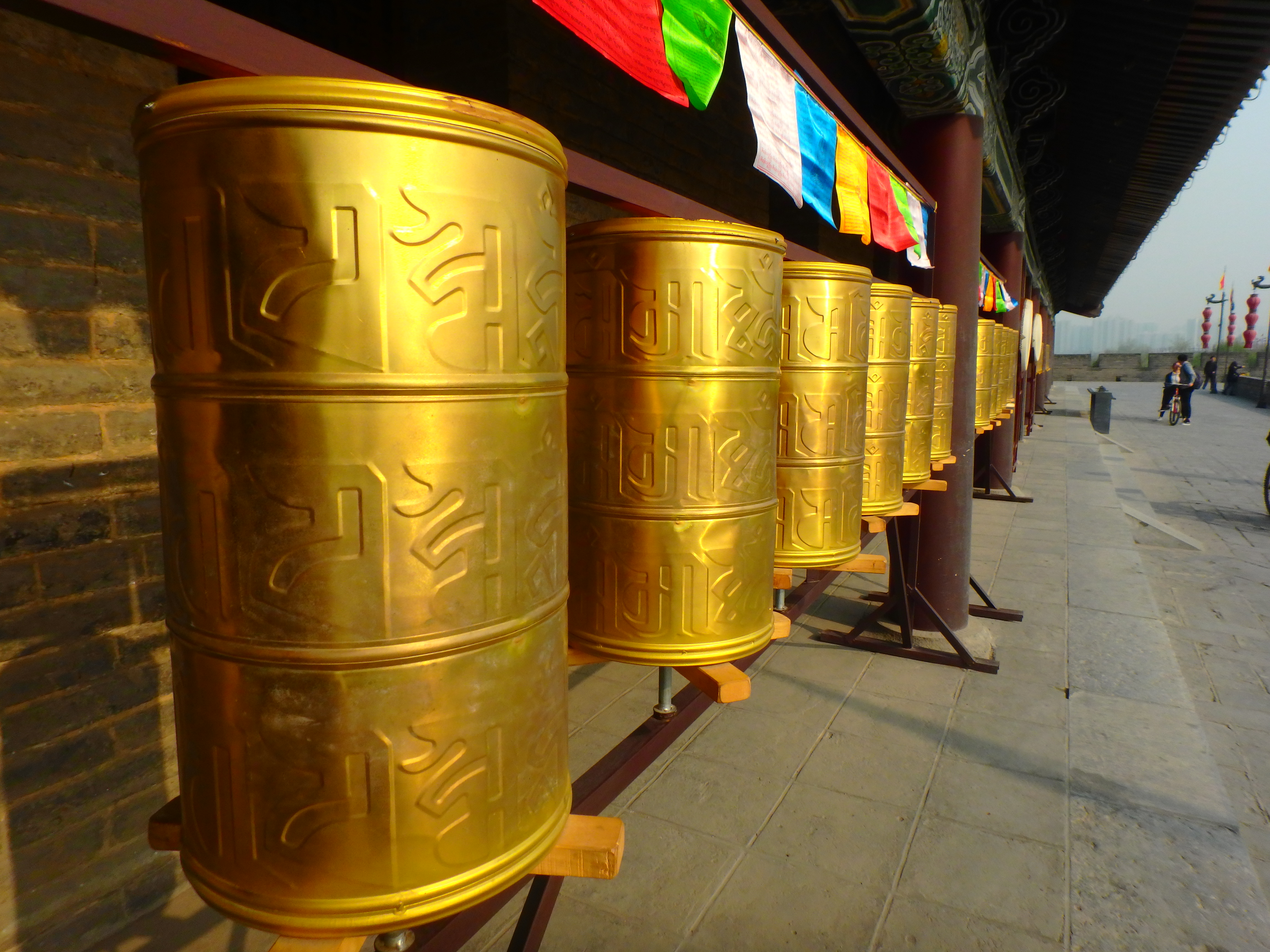
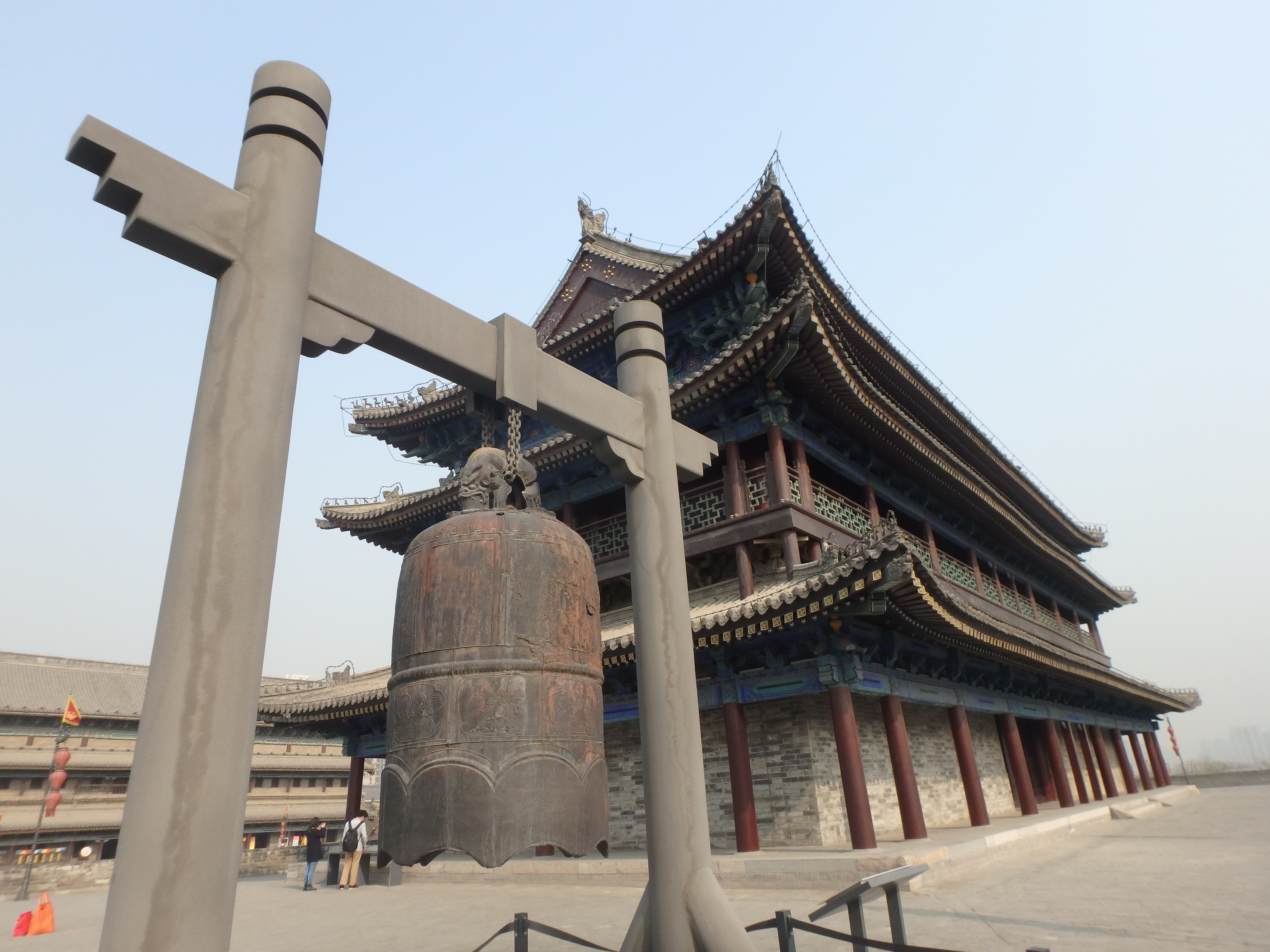
Renting the bike early in the morning is good as well to avoid the crowd. When I returned the bike at 10.30am, I had to reduce my bike speed significantly with the large crowd in the area.
The Great Mosque
Xi’an is a city with huge number of Muslim community in China. Visiting the mosque in Muslim corner had certainly to be on the list. Founded in the Tang Dynasty, this mosque is the largest and most important of the 38 city-center temples serving the Muslim community. Getting there was an adventure itself as one have to walk thru the busy bazaar and followed the directional signage which leads one to an alley. The mosque can be visited in most days except not recommended on Friday due to the prayers observed on this day of the week.
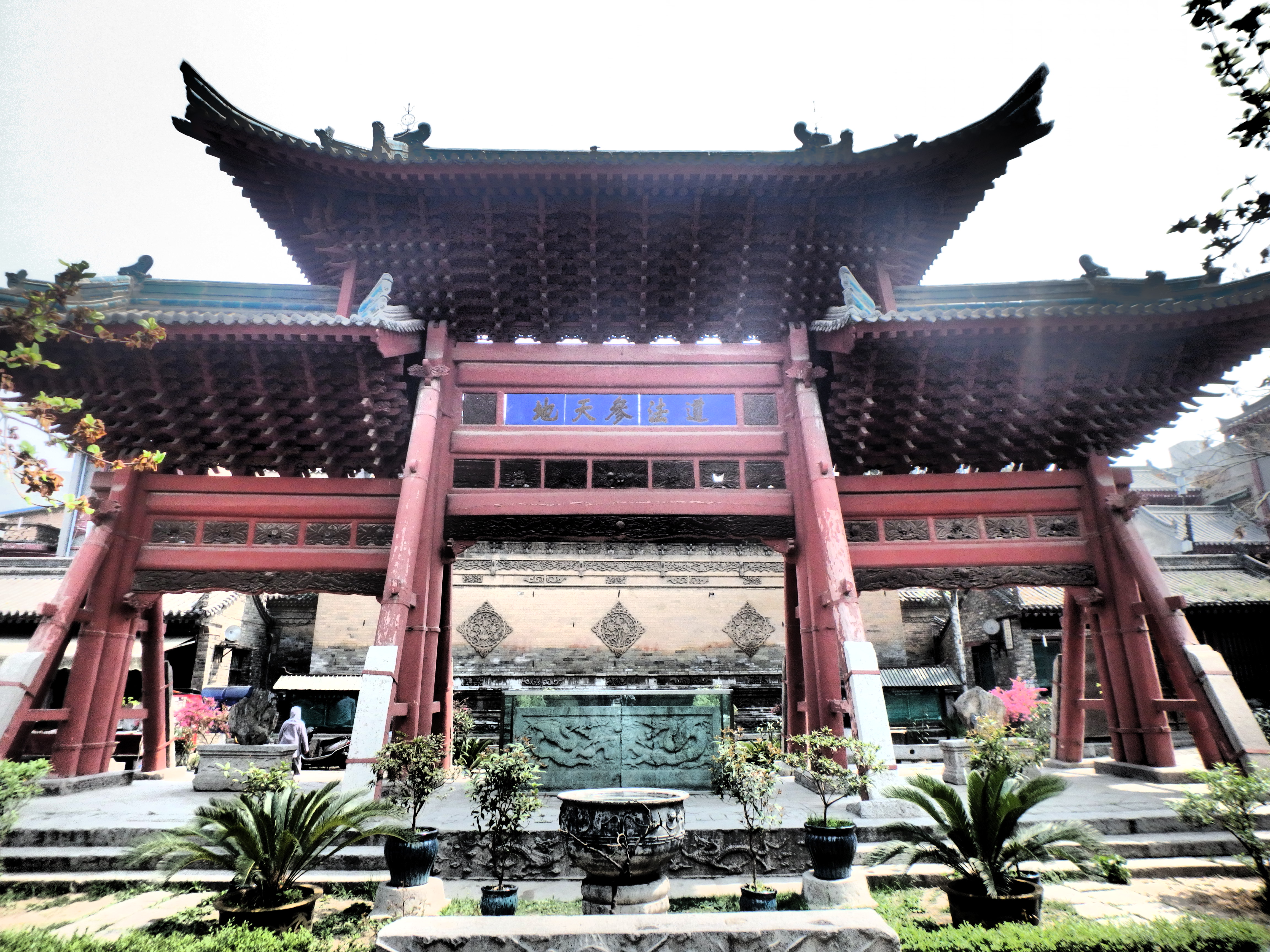
Entrance fee is RMB25 per person. It took me around an hour to explore in it reading up the books that was on display inside the vicinity. The architecture was very beautiful and one likely to enjoy the complete serenity that it brings, being a vast contrast when you step out to the busy Muslim street.
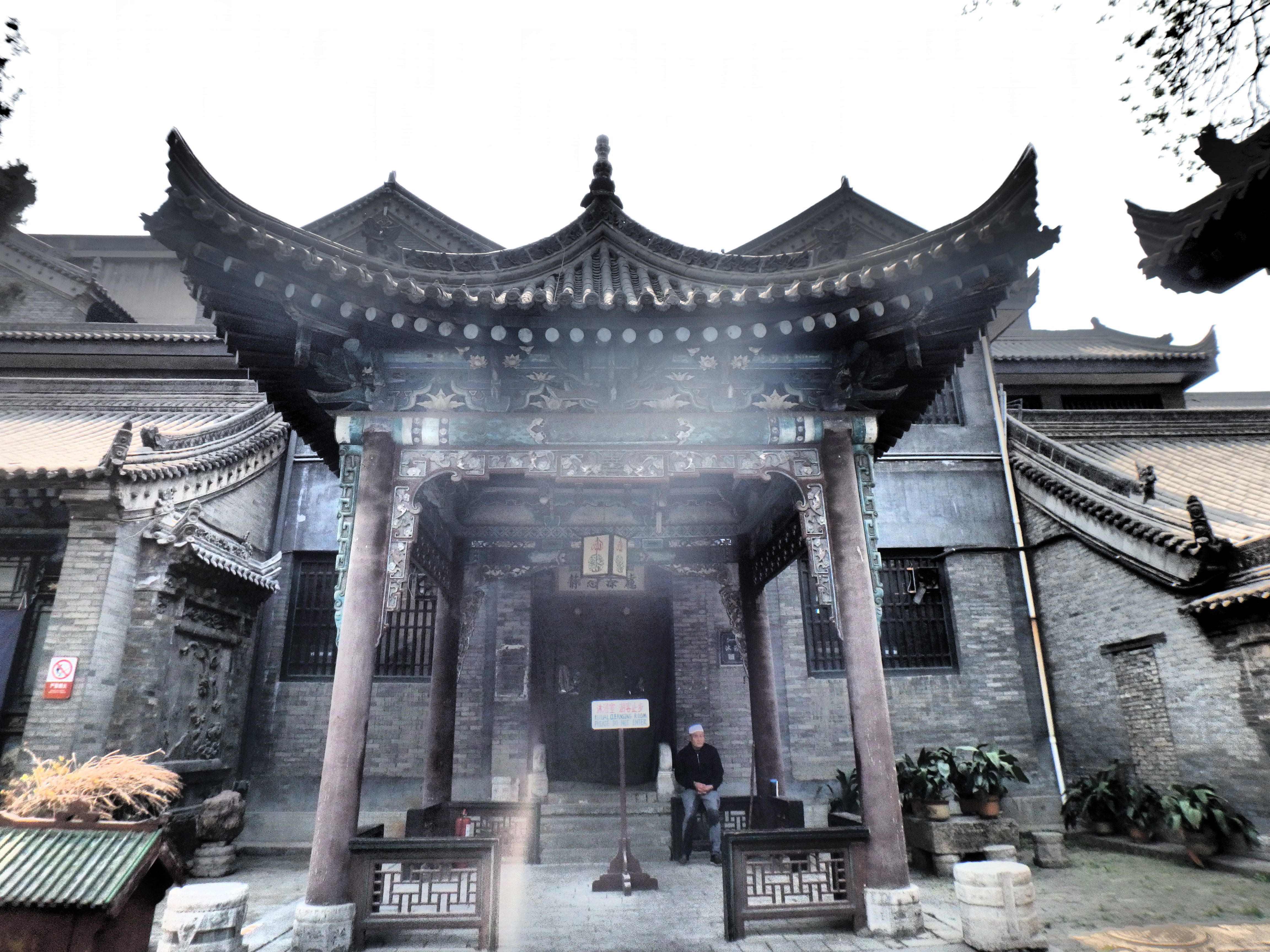
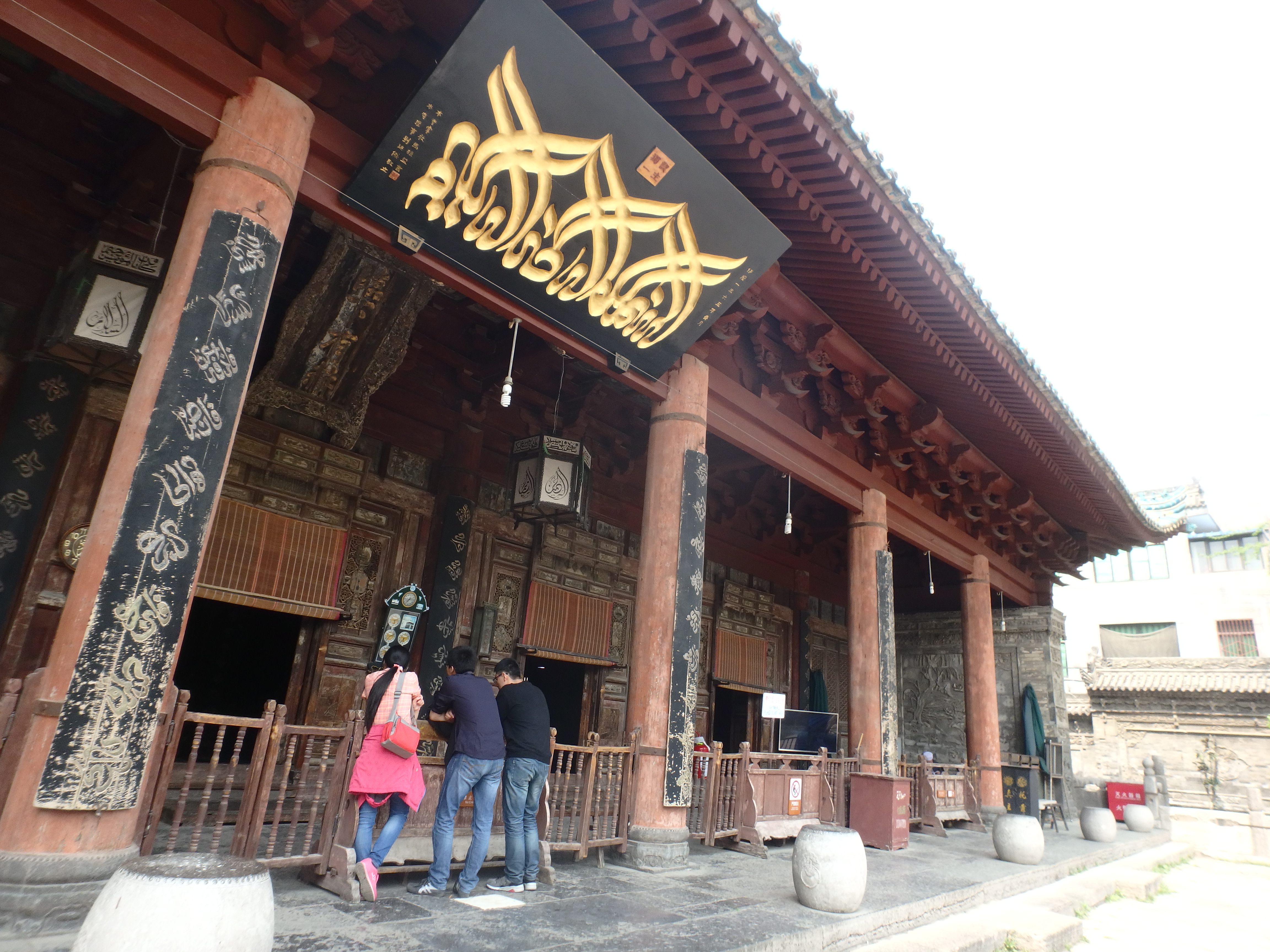
This was what I mean, the busy Muslim Street corner in the day…
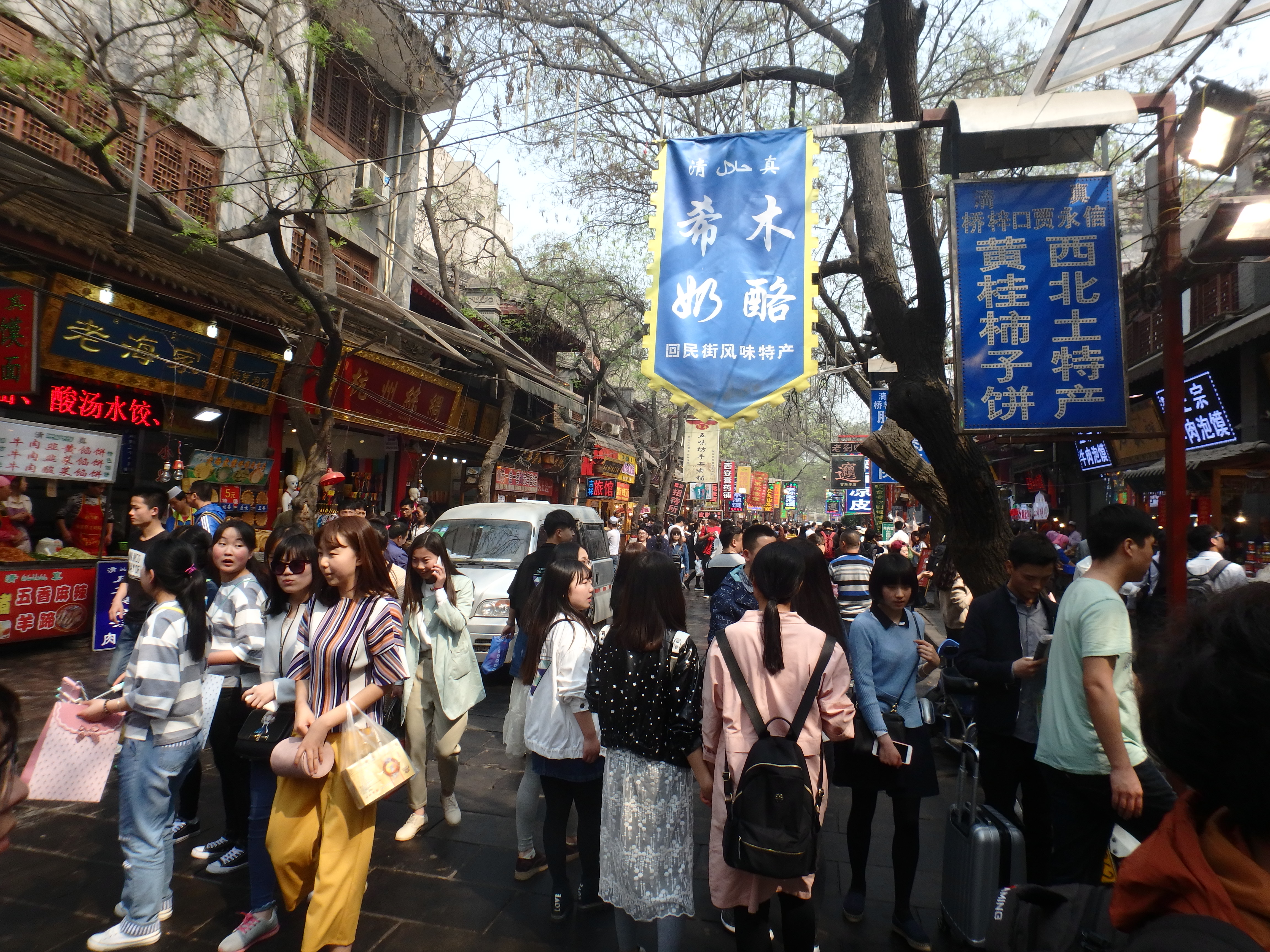
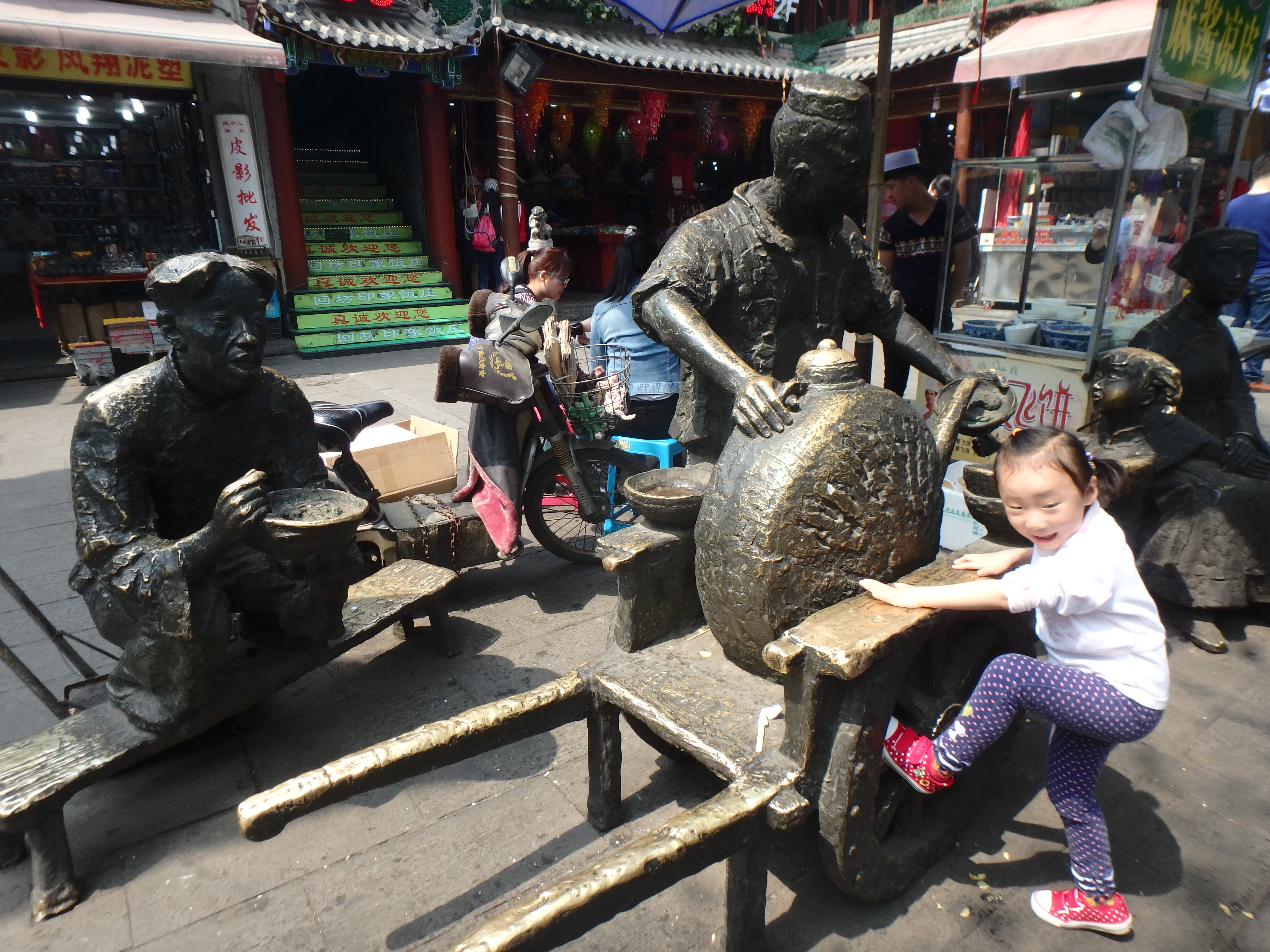
Airport Shuttle Bus
One have to make own way to this hotel called: “Xi’an Hotel” to take the airport shuttle bus. It is an hour ride to airport. Every 30 minutes, there will be 1 bus ride to the airport. It costs RMB25. The typical rate of a cab to airport is RMB150.
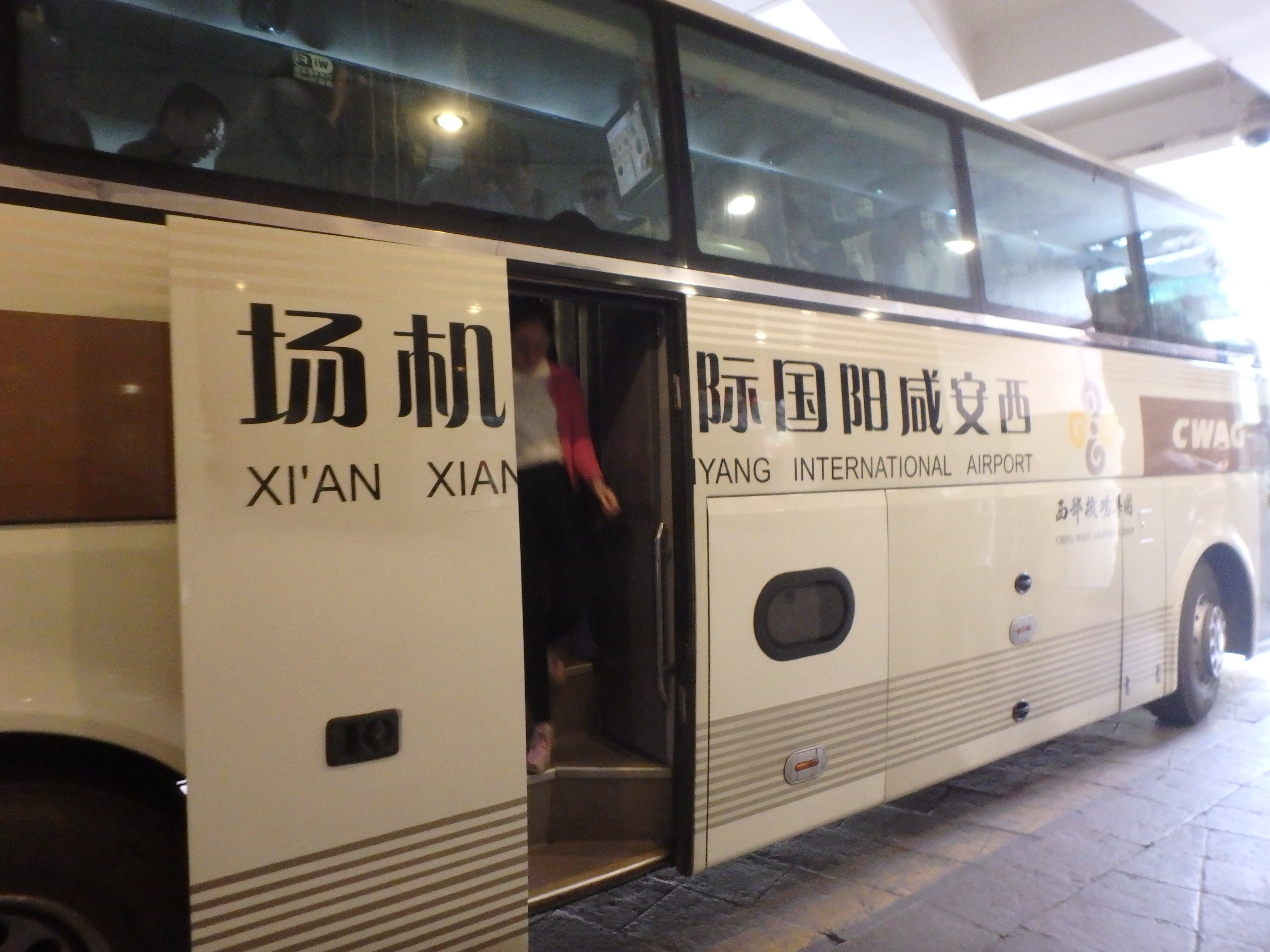
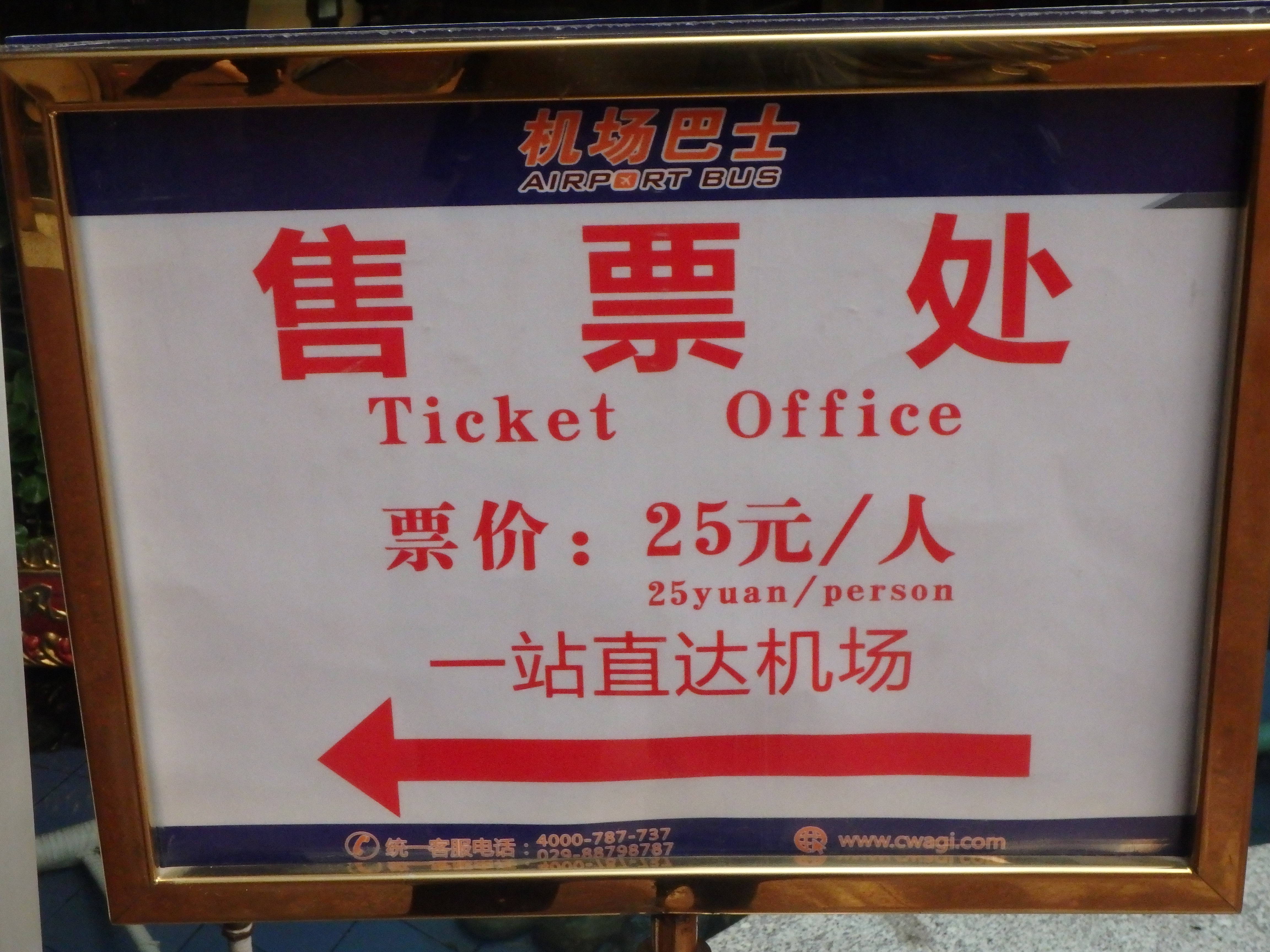
One will have to purchase the bus ticket first from the counter which is found inside the hotel building. There is free wifi provided in the airport shuttle bus.
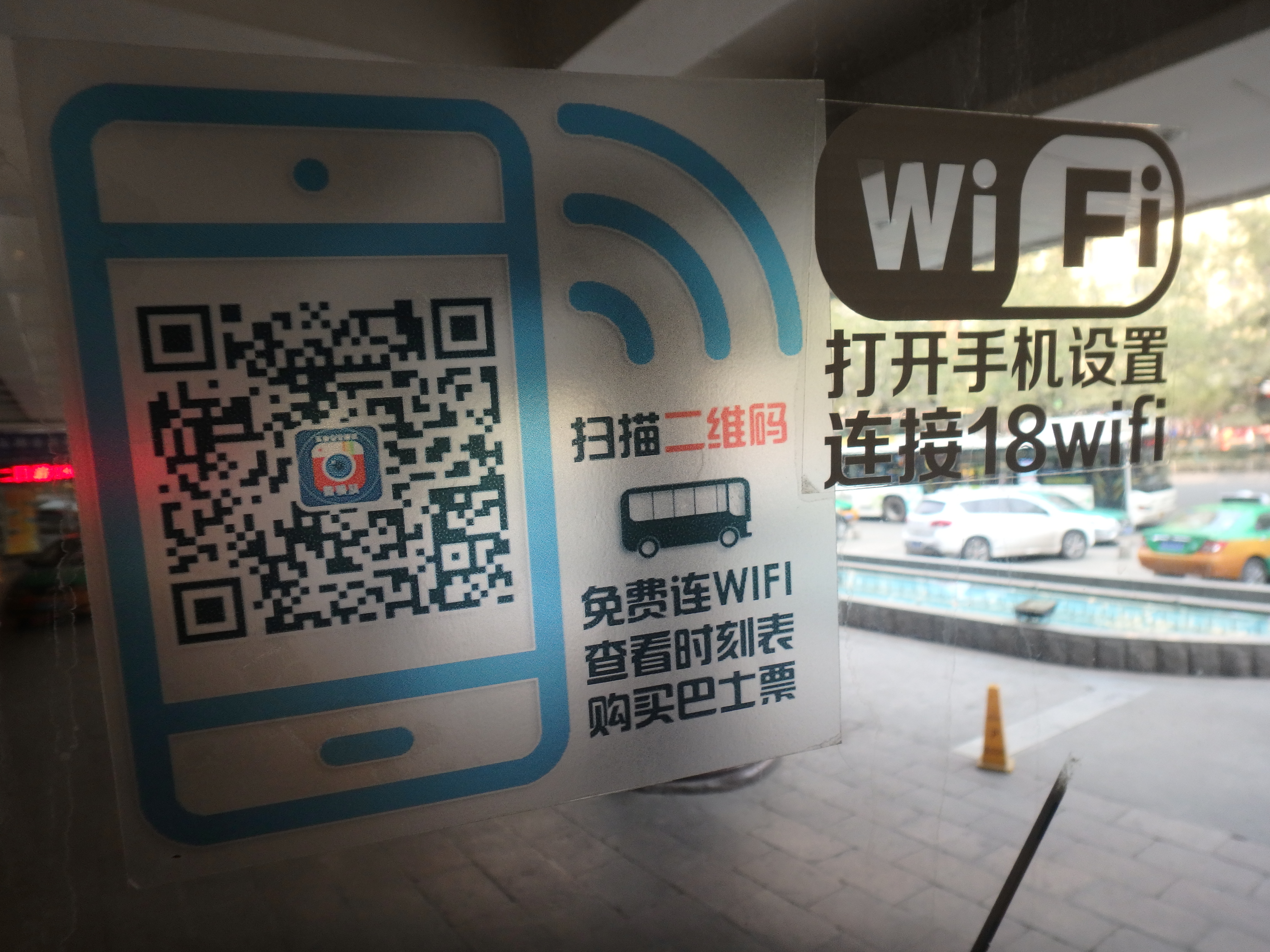
Food
Xi’an has some of the best food in China. The Yangrou Paomo which is like a bread soaked in mutton soup. It combines Mongolian mutton way of eating style, breads that is loved by Central Asian nations, tear into pieces. It can be seen commonly in Xi’an. Worth a try!
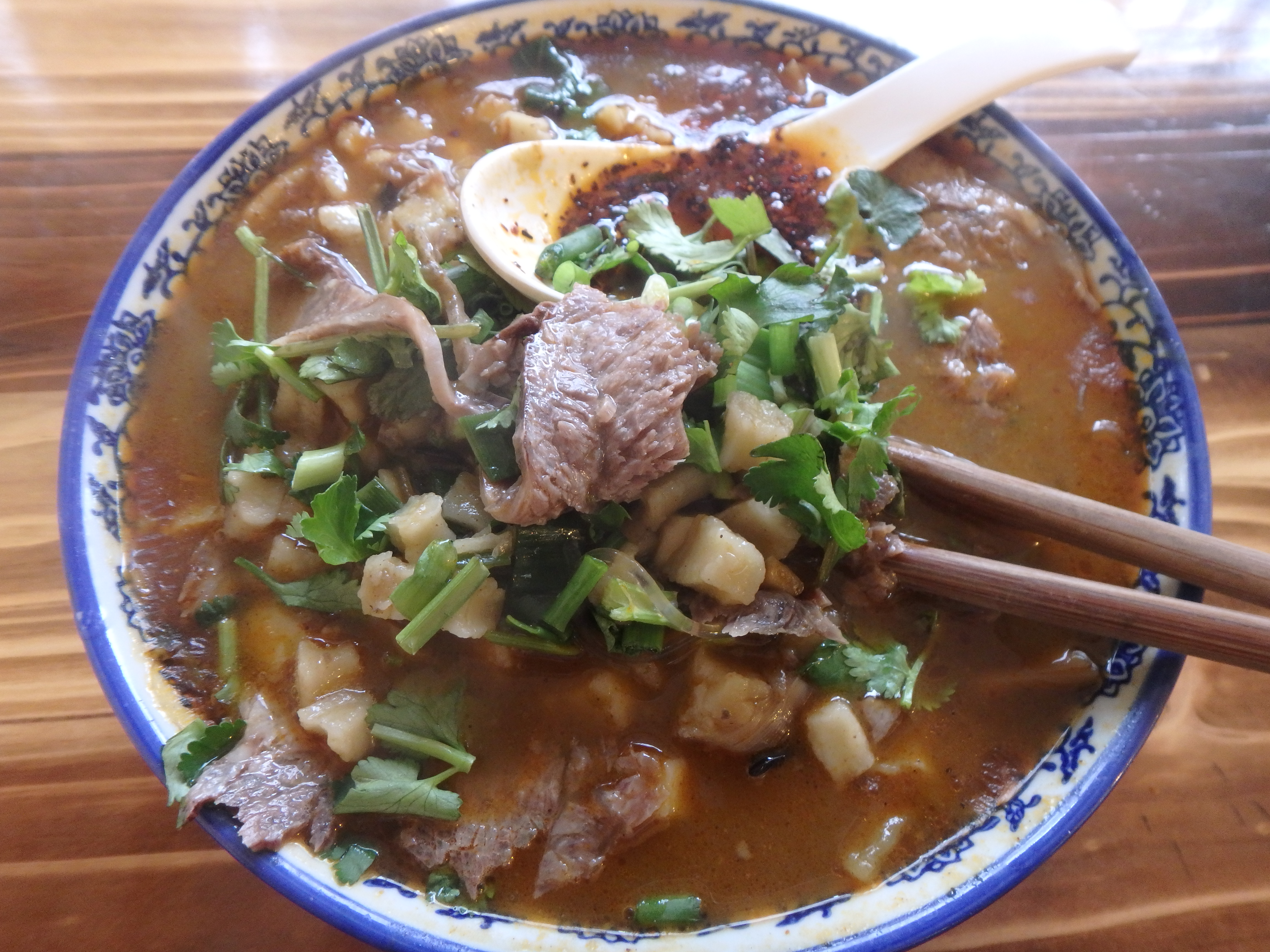
The next dish would be the famous snack: Rou Jia Mo. It is like hamburger with chopped pork stuffed between 2 buns with sweet gravy over it. It is served cold and soggy.
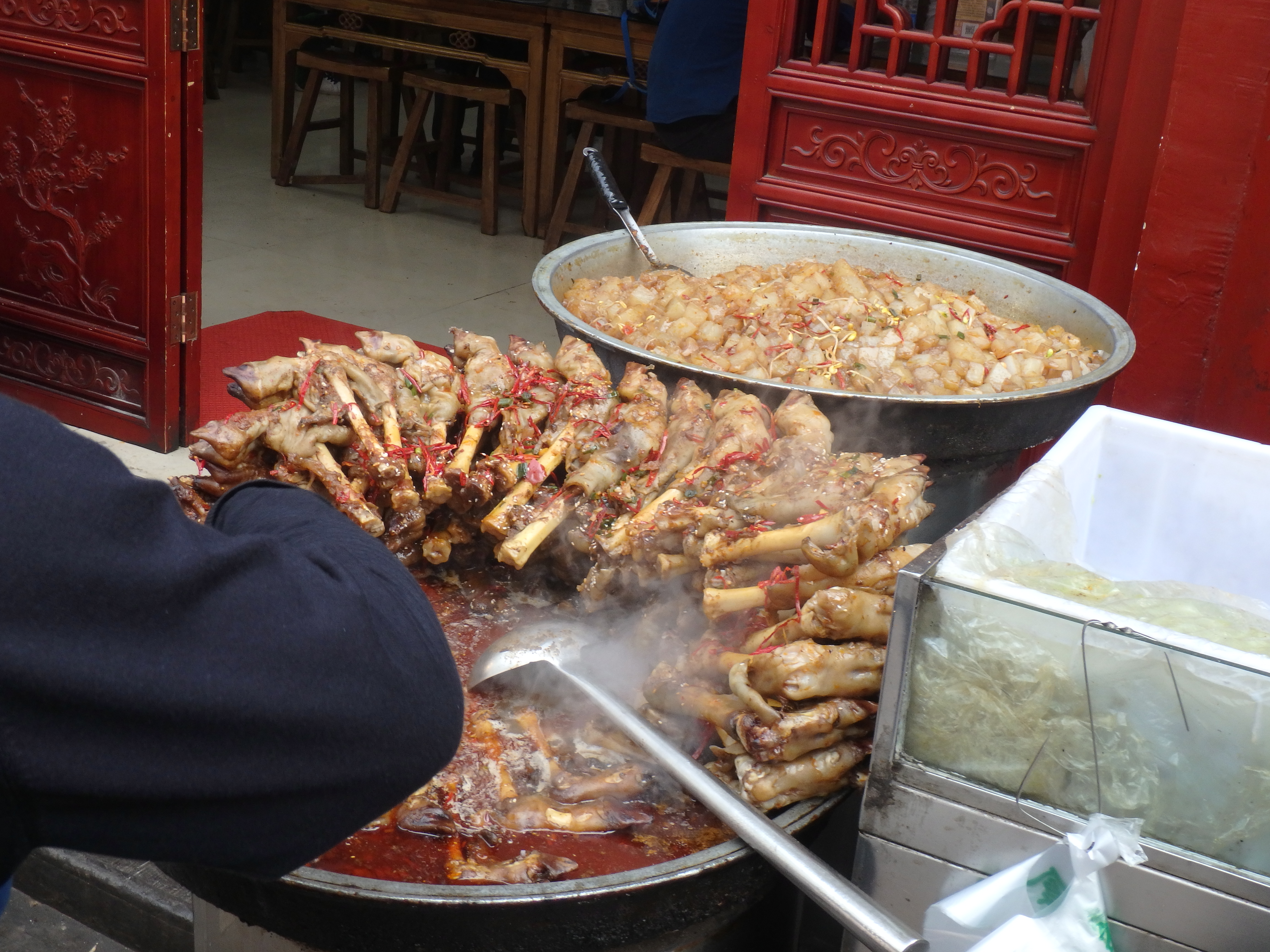
The best noodles I have ever ate was in Xi’an. It is call Liang Pi (literal translation – cold noodles). It would be something like thick noodles like Udon mixed with fragrant sesame paste and many sauces. Mix it well and it is heavenly tasty!
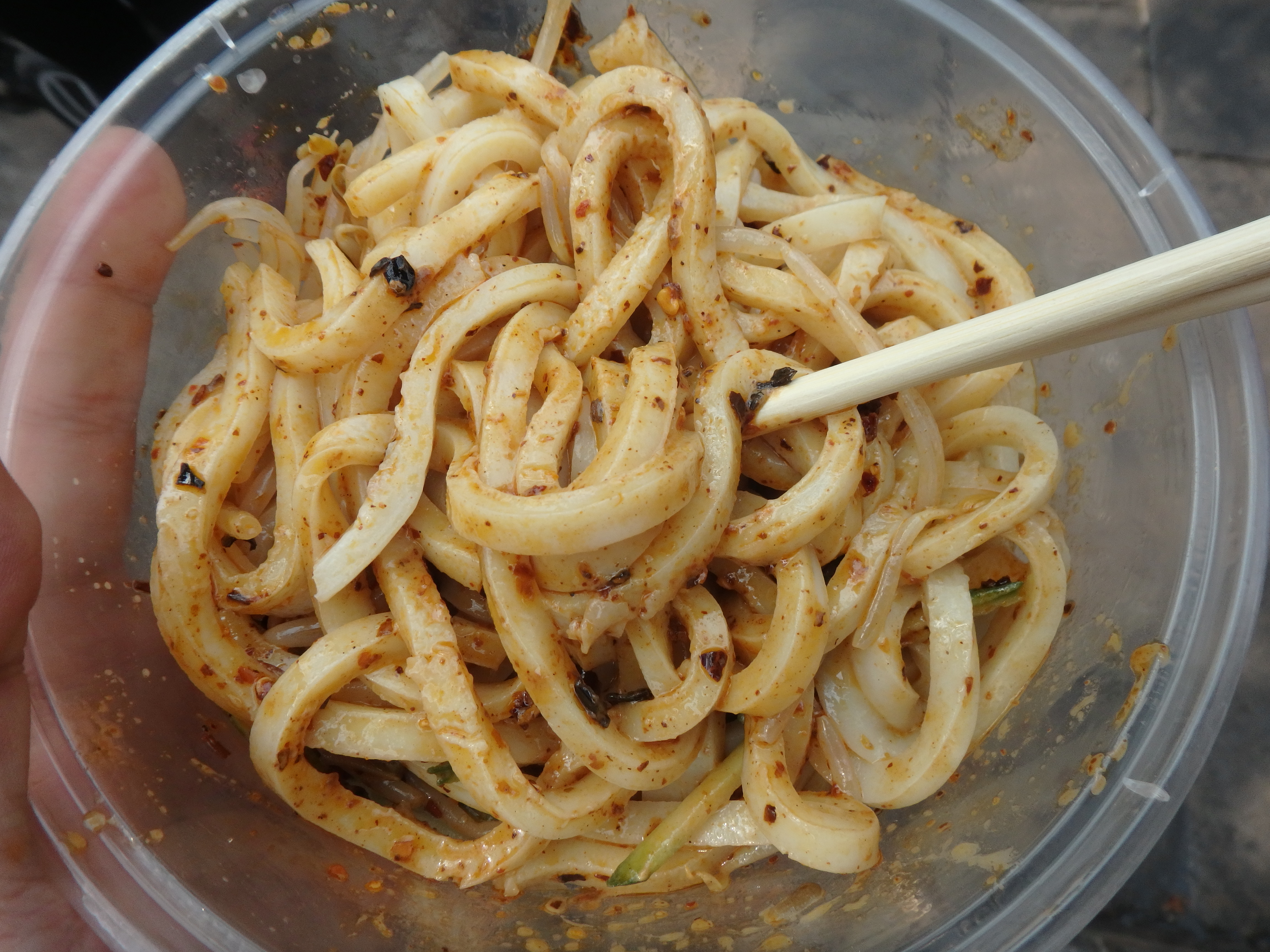
Categories: Asia Region
2 comments
Leave a Reply Cancel reply
Calendar
| M | T | W | T | F | S | S |
|---|---|---|---|---|---|---|
| « Feb | ||||||
| 1 | 2 | 3 | 4 | 5 | 6 | |
| 7 | 8 | 9 | 10 | 11 | 12 | 13 |
| 14 | 15 | 16 | 17 | 18 | 19 | 20 |
| 21 | 22 | 23 | 24 | 25 | 26 | 27 |
| 28 | 29 | 30 | ||||
Archives
- February 2025
- November 2024
- October 2024
- September 2024
- August 2024
- June 2024
- April 2024
- February 2024
- November 2023
- October 2023
- August 2023
- July 2023
- April 2023
- February 2023
- October 2022
- September 2022
- August 2022
- July 2022
- June 2022
- December 2021
- July 2021
- June 2021
- March 2021
- January 2021
- December 2020
- November 2020
- October 2020
- July 2020
- June 2020
- May 2020
- April 2020
- February 2020
- January 2020
- December 2019
- November 2019
- October 2019
- August 2019
- July 2019
- June 2019
- May 2019
- April 2019
- January 2019
- December 2018
- November 2018
- September 2018
- August 2018
- July 2018
- June 2018
- May 2018
- March 2018
- February 2018
- January 2018
- December 2017
- November 2017
- October 2017
- September 2017
- August 2017
- July 2017
- June 2017
- May 2017
- April 2017
- March 2017
- February 2017
- January 2017
- December 2016
- November 2016
- October 2016
- September 2016
- August 2016
- July 2016
- June 2016
- May 2016
- April 2016
- March 2016
- February 2016
- January 2016
- December 2015
- November 2015
- October 2015
- September 2015
- August 2015
- July 2015
- June 2015
- May 2015
- April 2015
- March 2015
- February 2015
- January 2015
HI! Great post! Only suggestion – the last picture isn’t biang biang mian. It’s Liang Pi (literal translation – cold noodles). Biang biang mian is wide and served hot. It’s named after the sound that you hear when the noodles are made – the slapping of the dough over and over against the cooking board. I love both dishes but they’re very different and wouldn’t want your readers confused 🙂 happy travels
Thanks for the feedback, Amy! I will amend it accordingly.